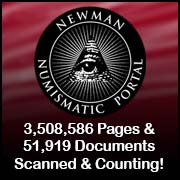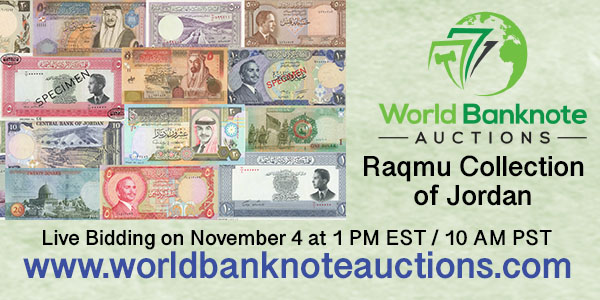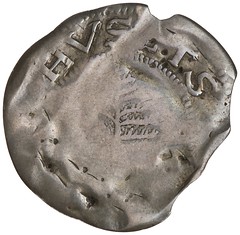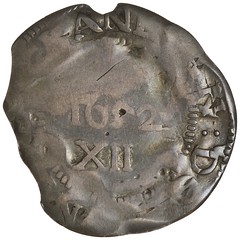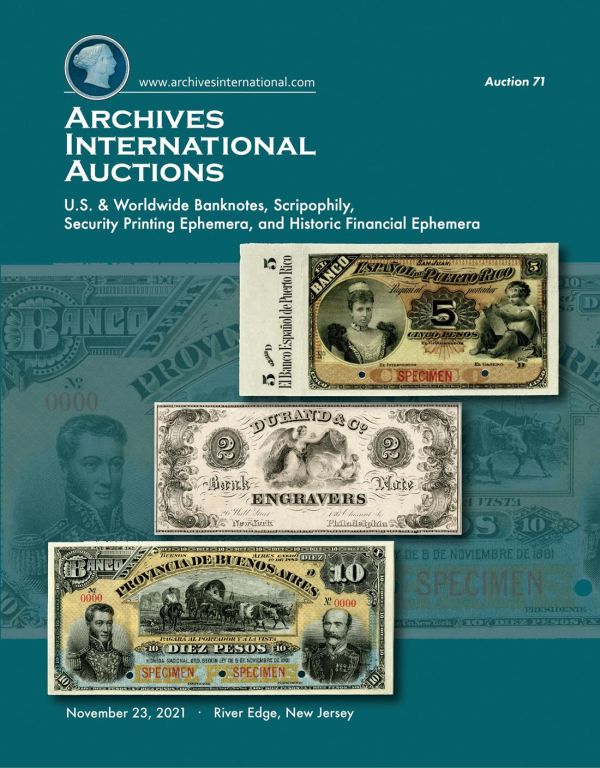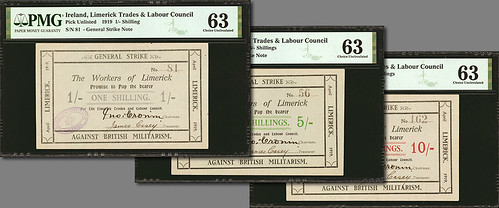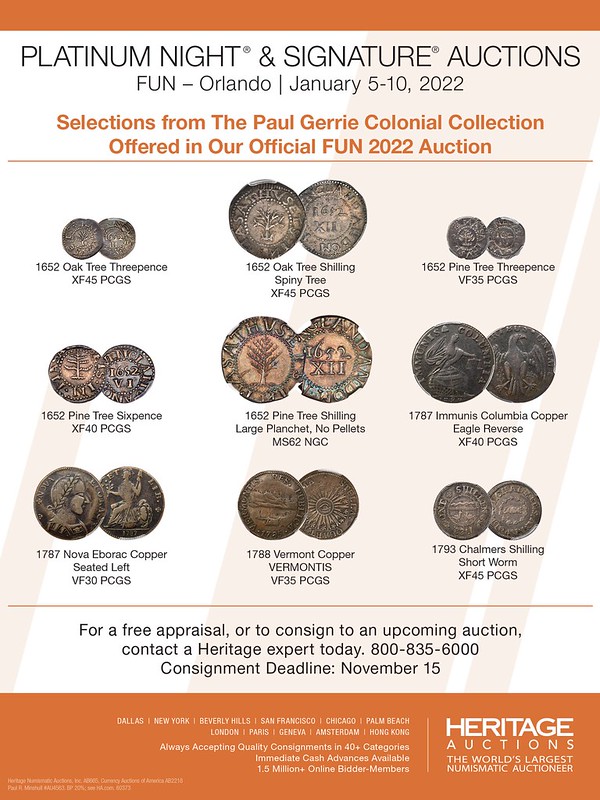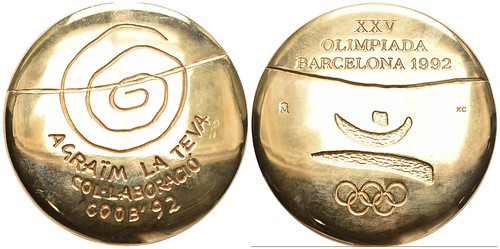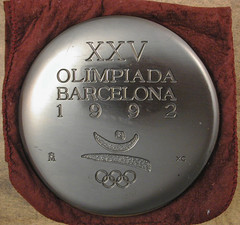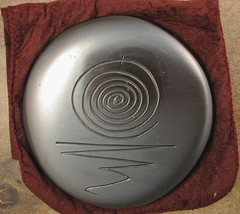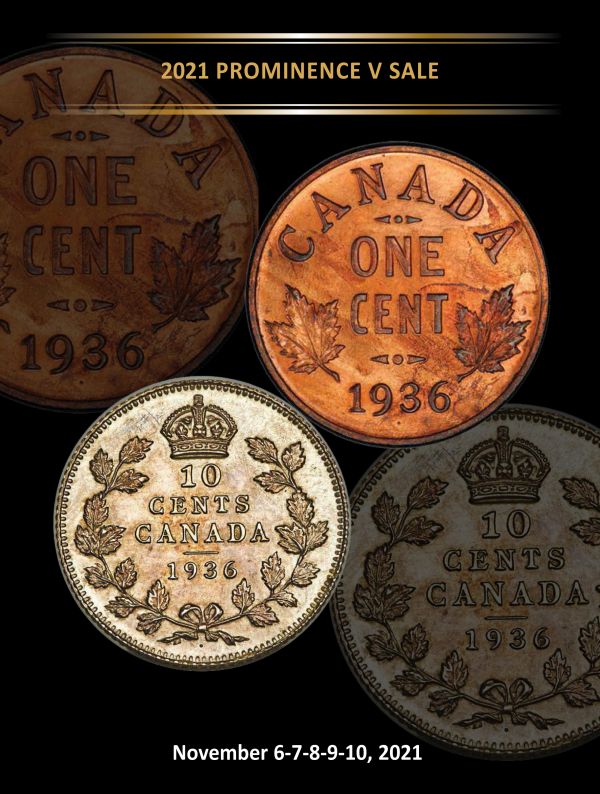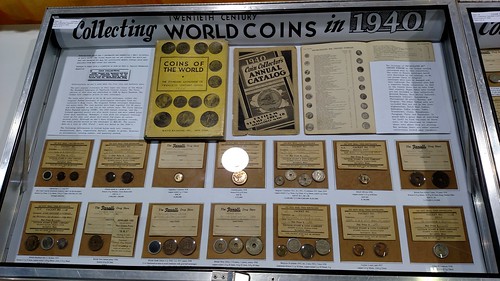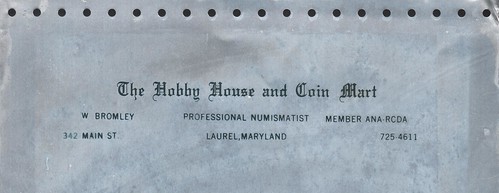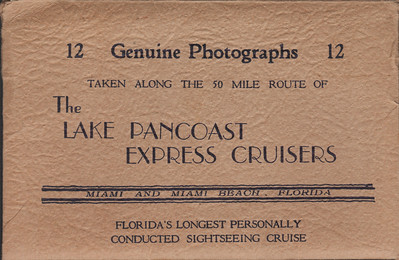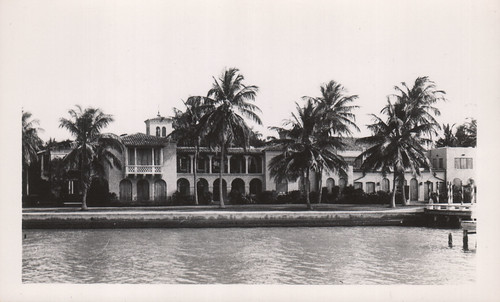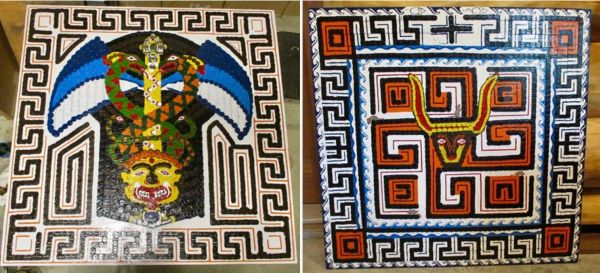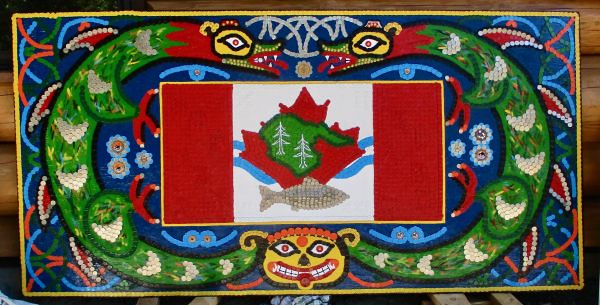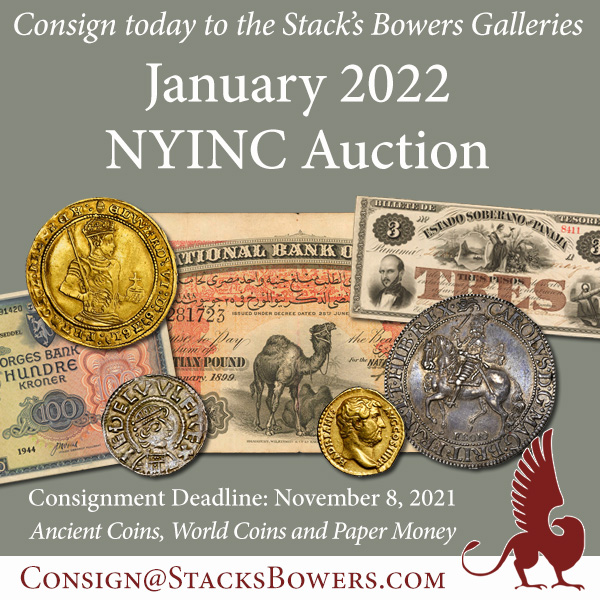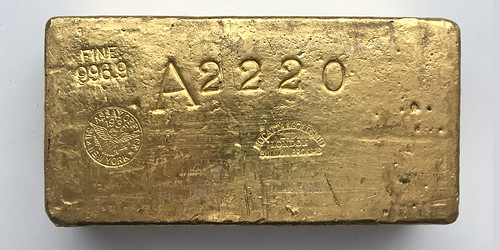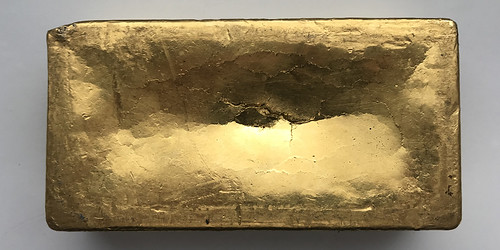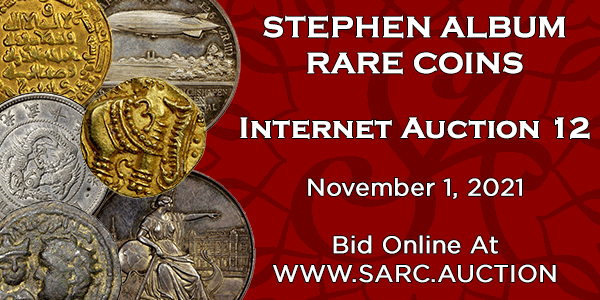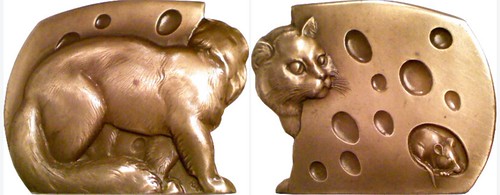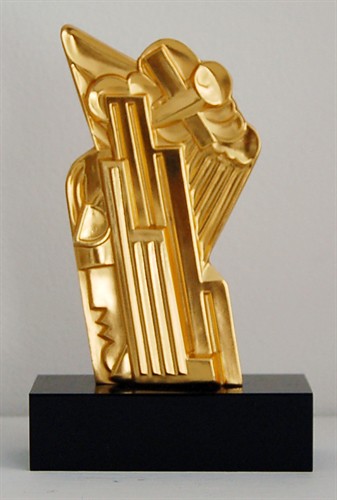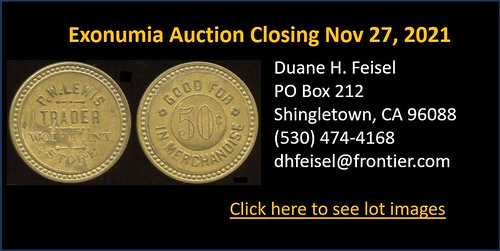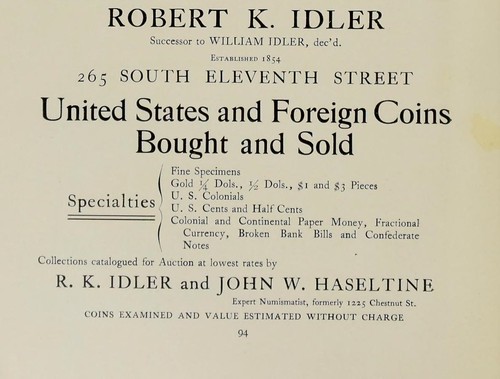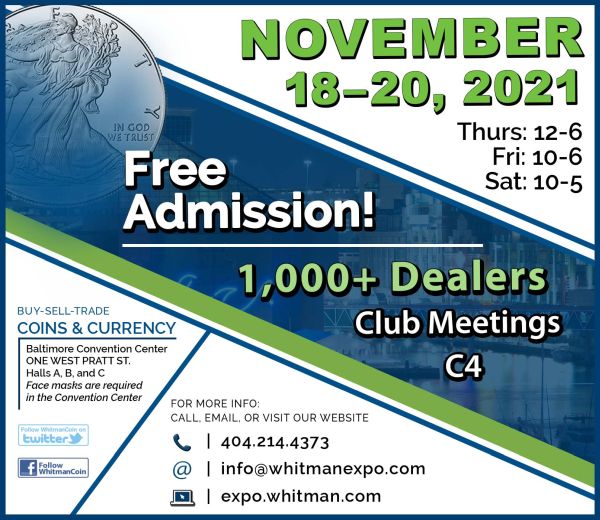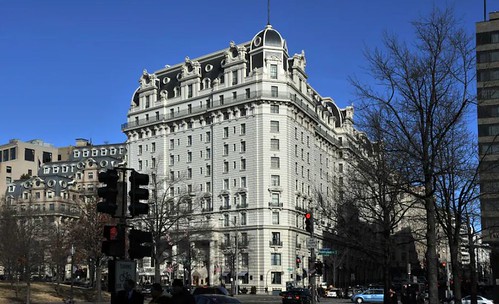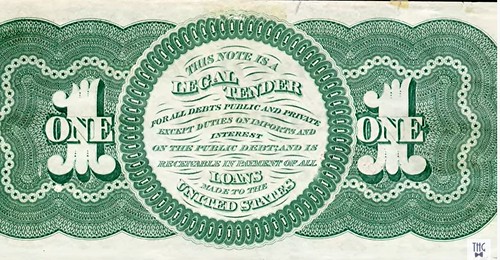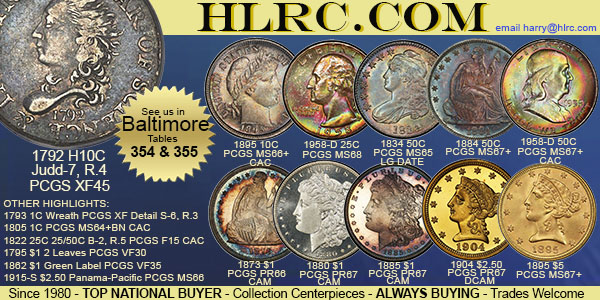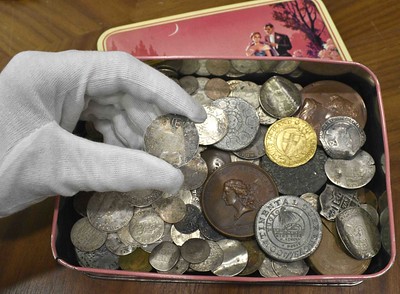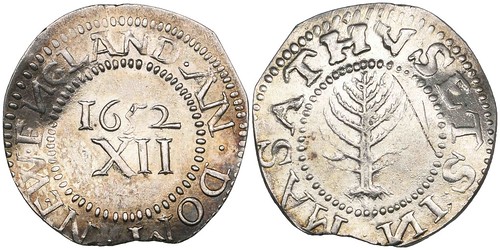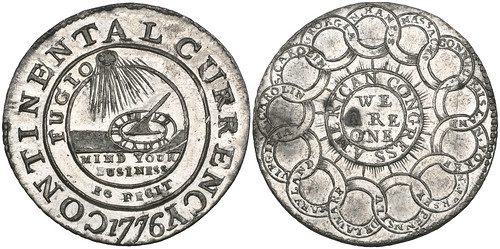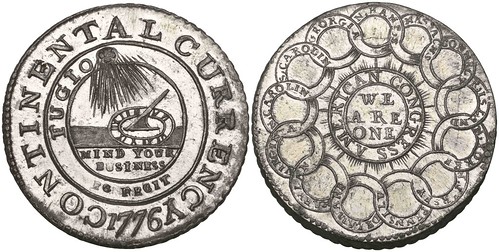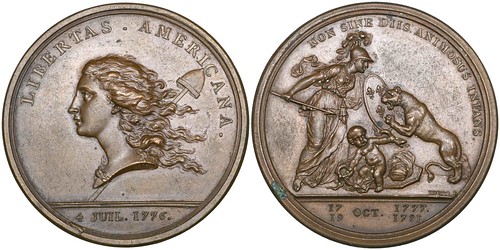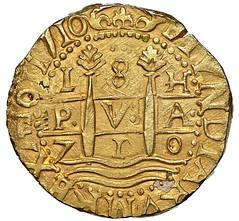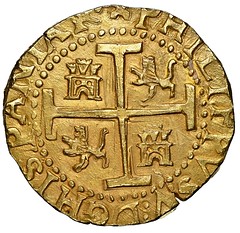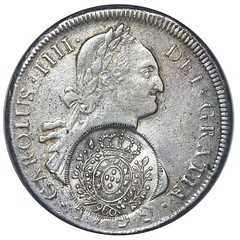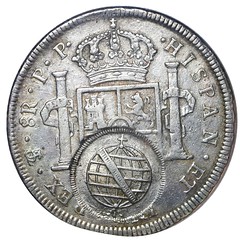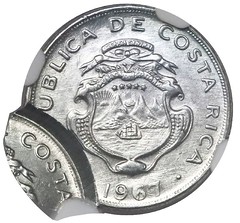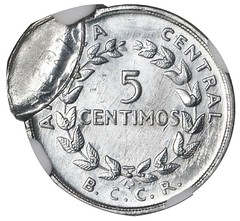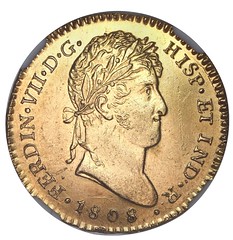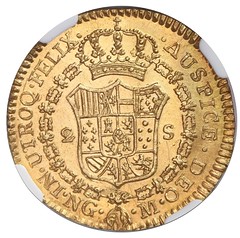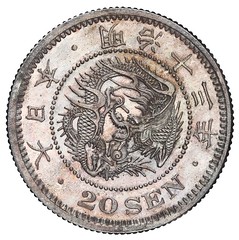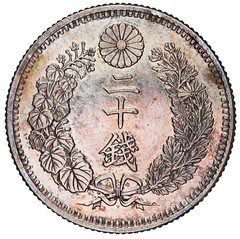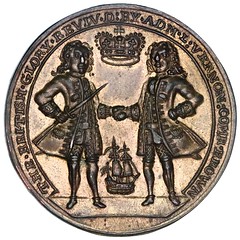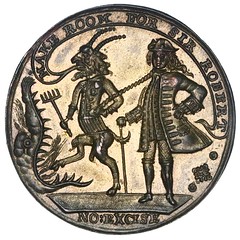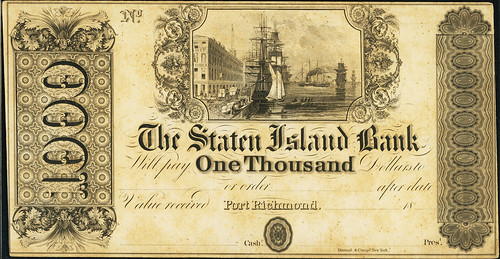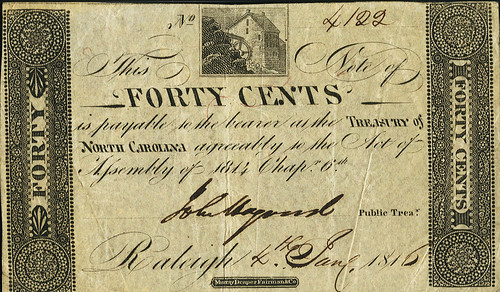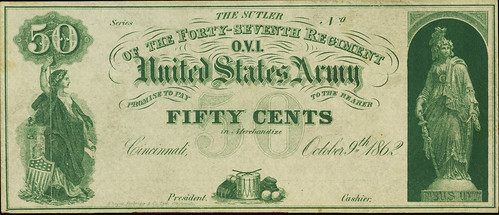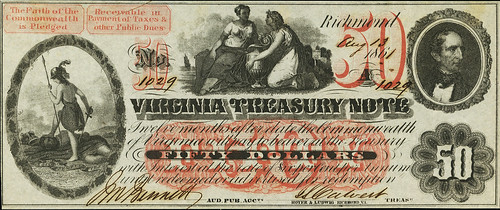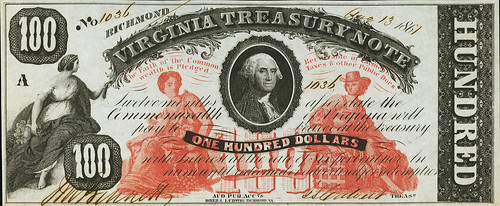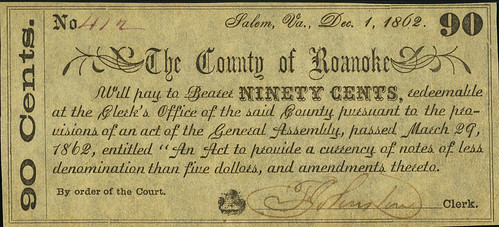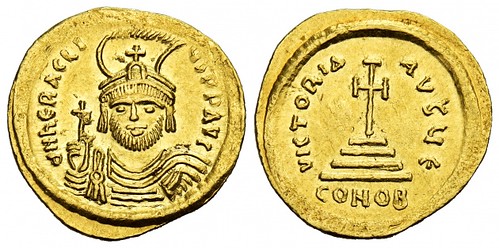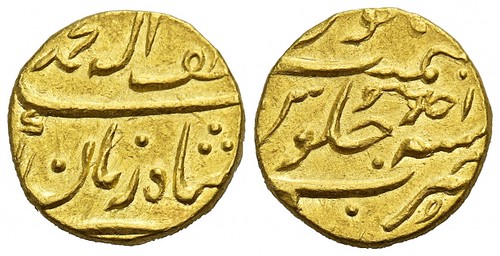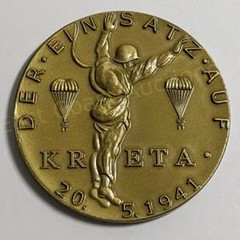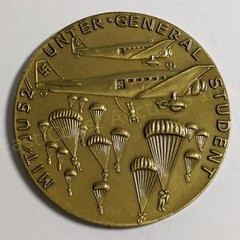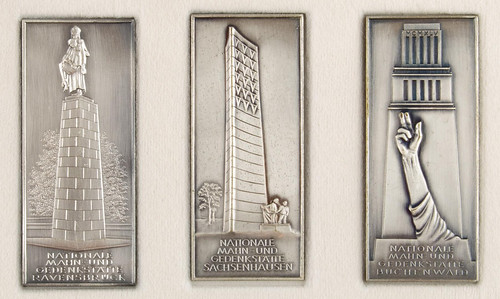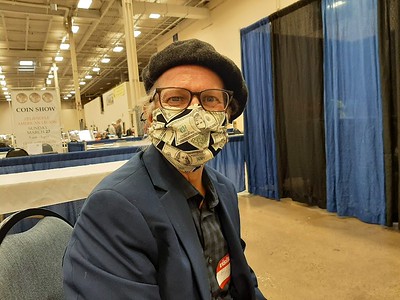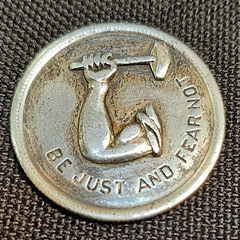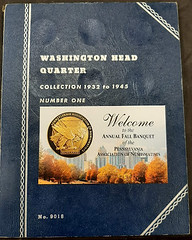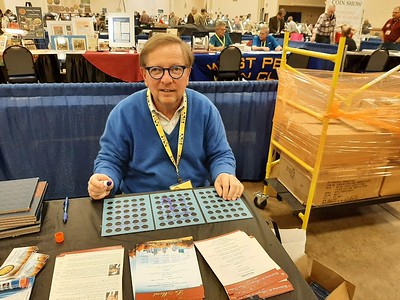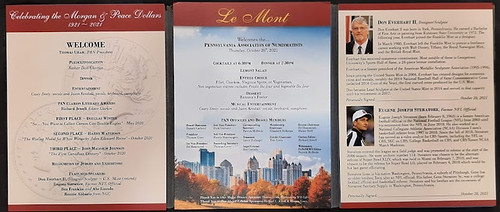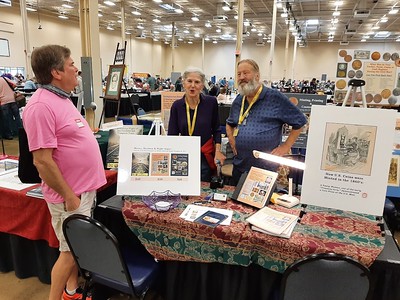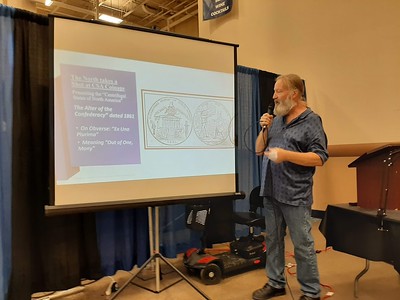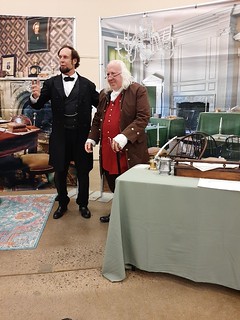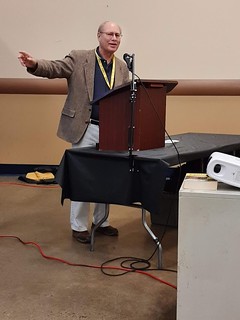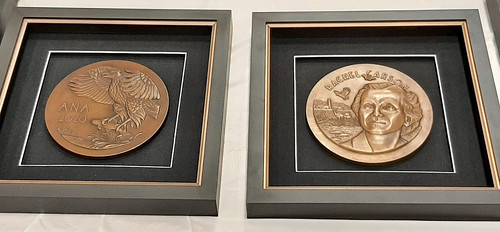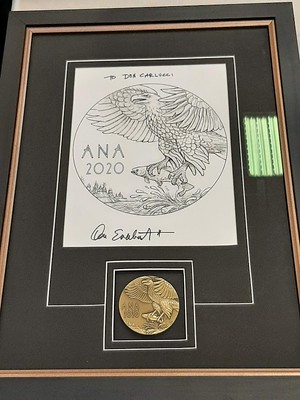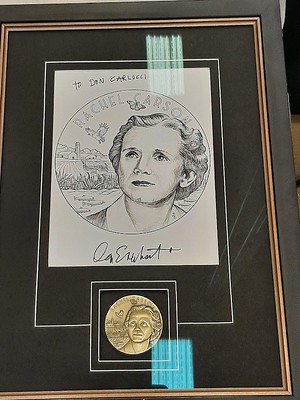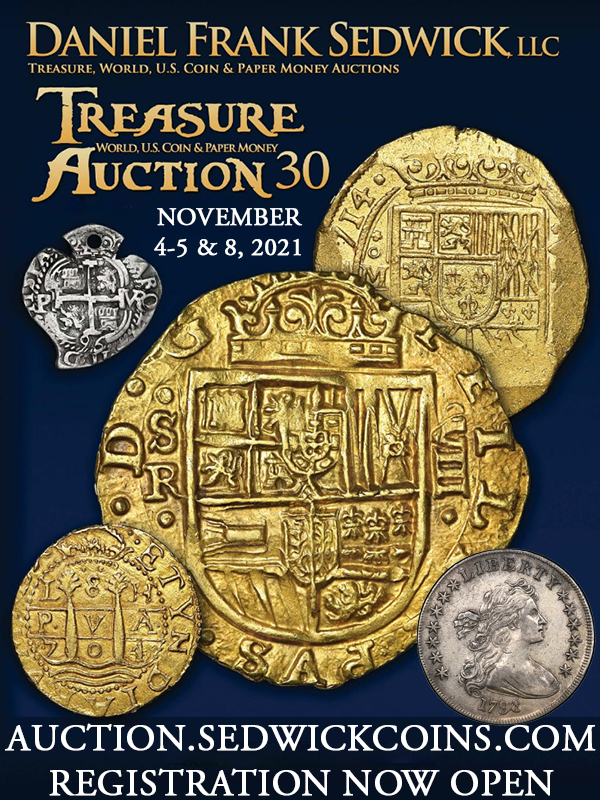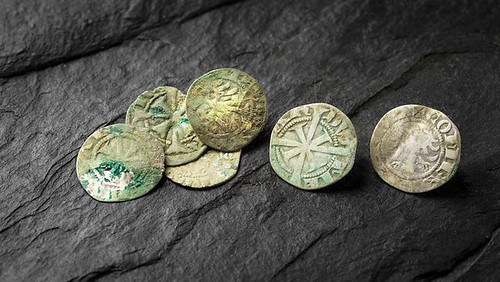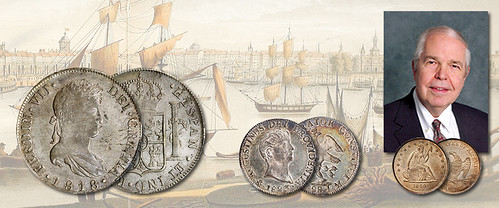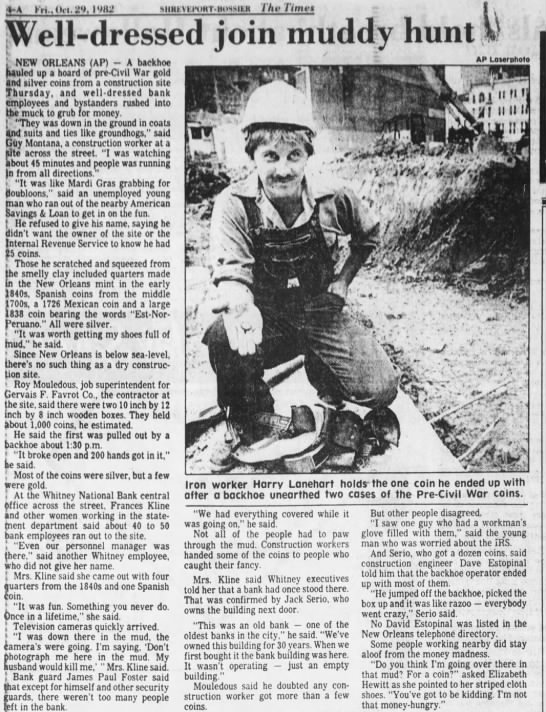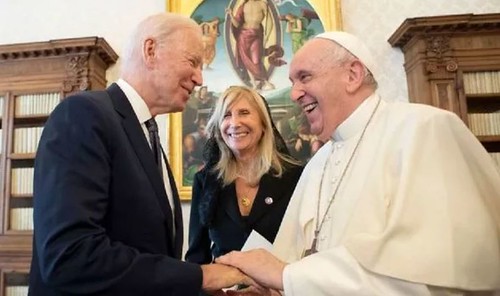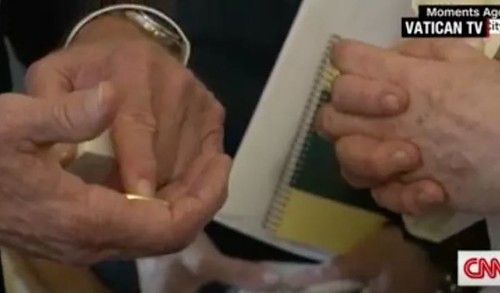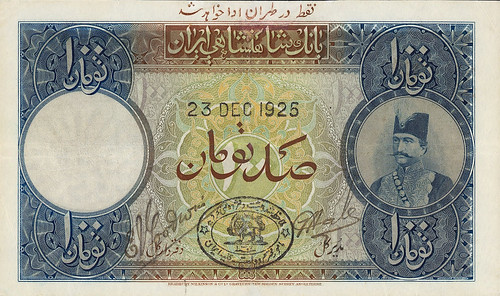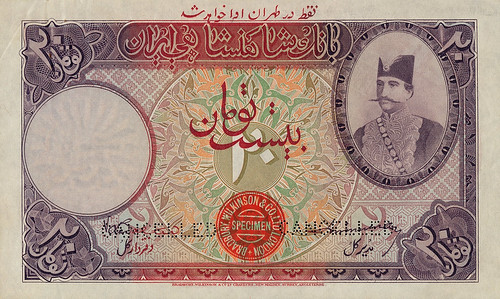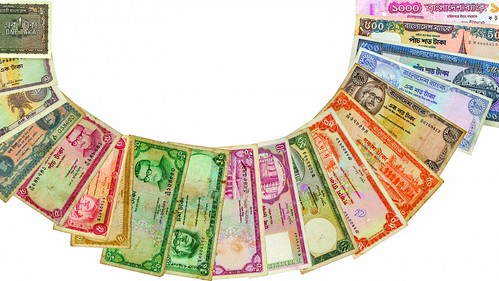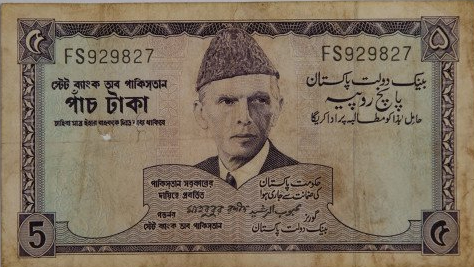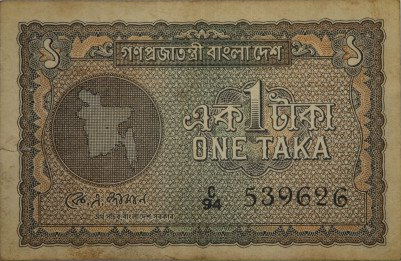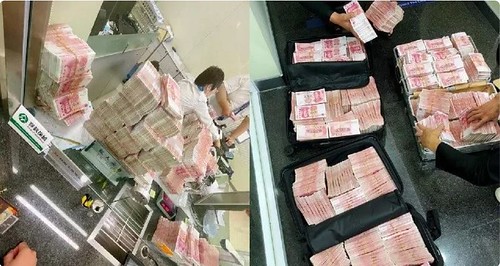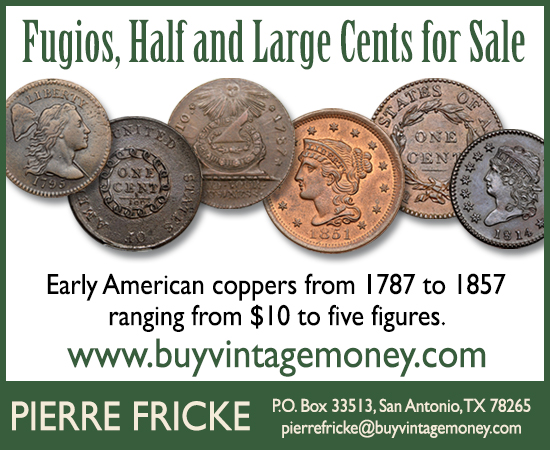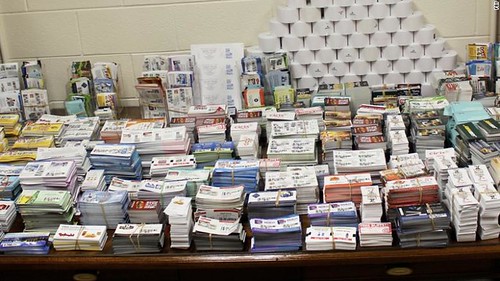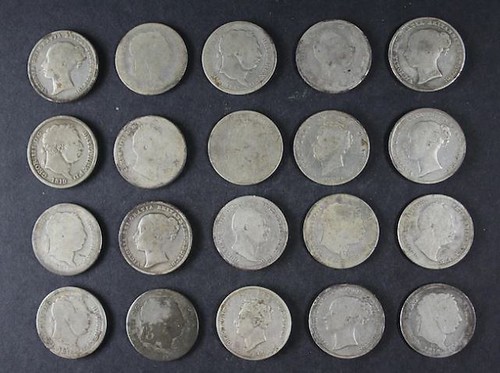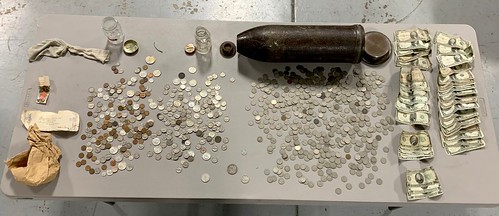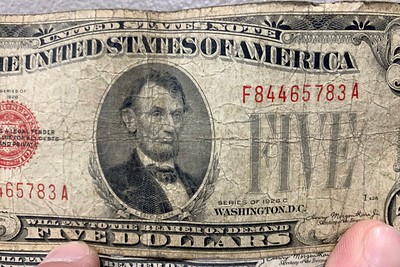
Visit our NBS Sponsors


About UsThe Numismatic Bibliomania Society is a non-profit association devoted to the study and enjoyment of numismatic literature. For more information please see our web site at coinbooks.org SubscriptionsThose wishing to become new E-Sylum subscribers (or wishing to Unsubscribe) can go to the following web page link MembershipThere is a membership application available on the web site Membership Application To join, print the application and return it with your check to the address printed on the application. Print/Digital membership is $40 to addresses in the U.S., and $60 elsewhere. A digital-only membership is available for $25. For those without web access, write to: Charles Heck, Treasurer AsylumFor Asylum mailing address changes and other membership questions, contact Chuck at this email address: treasurer@coinbooks.org SubmissionsTo submit items for publication in The E-Sylum, write to the Editor at this address: whomren@gmail.com BUY THE BOOK BEFORE THE COINSale CalendarWatch here for updates! |
- WAYNE'S WORDS: THE E-SYLUM OCTOBER 31, 2021
- NEWMAN PORTAL: BENT COIN SUPERSTITION
- VIDEO: THE 2022 CENTRAL STATES SHOW
- OCTOBER 2021 NNP SYMPOSIUM VIDEOS POSTED
- BRITISH MUSEUM HOLDS BOGGS OLD BAILEY NOTE
- MORE ON THE 1919 IRISH LIMERICK SOVIET NOTES
- MORE ON 1992 BARCELONA OLYMPICS MEDALS
- NOTES FROM E-SYLUM READERS: OCTOBER 31, 2021
- HORNBY ISLAND COIN ART
- U.S. ASSAY OFFICE AT NEW YORK GOLD INGOT
- VOCABULARY TERM: FREE-STANDING MEDAL
- WILLIAM AND ROBERT IDLER
- GREENBACKS AND THE WILLARD HOTEL
- MORE ON THE MORTON & EDEN SWEET TIN COINS
- SEDWICK NOVEMBER 2021 AUCTION 30 SELECTIONS
- SELECTIONS FROM HERITAGE TALLENT COLLECTION
- NUMISMATIC NUGGETS: OCTOBER 31, 2021
- WAYNE'S NUMISMATIC DIARY: OCTOBER 31, 2021
- MEDIEVAL COIN FIND IN UPPER AUSTRIA
- 1982 NEW ORLEANS COIN HOARD DISCOVERY
- BIDEN GIVES POPE FRANCIS A CHALLENGE COIN
- THE IMPERIAL BANK OF PERSIA
- THE EVOLUTION OF BANGLADESHI BANKNOTES
- CHINESE MILLIONAIRE WITHDRAWS CASH
- COUNTERFEIT COUPON CAPER
- NORTH KOREANS USING CASH COUPONS
- CONVICT COIN STASH FOUND AT PORT ARTHUR
- AMMUNITION ROUND FILLED WITH MONEY
- LADY GAGA'S $100 BILL BOA
Click here to read the thin version on the web
Click here to subscribe
Click here to access the complete archive
To comment or submit articles, reply to whomren@gmail.com
Content presented in The E-Sylum is not necessarily researched or independently fact-checked, and views expressed do not necessarily represent those of the Numismatic Bibliomania Society.
WAYNE'S WORDS: THE E-SYLUM OCTOBER 31, 2021
 New subscribers this week include:
Amandeep Jassal and
Mitch Fraas.
Welcome aboard! We now have 6,731 subscribers.
New subscribers this week include:
Amandeep Jassal and
Mitch Fraas.
Welcome aboard! We now have 6,731 subscribers.
Thank you for reading The E-Sylum. If you enjoy it, please send me the email addresses of friends you think may enjoy it as well and I'll send them a subscription. Contact me at whomren@gmail.com anytime regarding your subscription, or questions, comments or suggestions about our content.
This week we open with updates from the Newman Numismatic Portal and the estate of J.S.G. Boggs, reader comments and more.
Other topics this week include the PAN and Central States shows, coin art, gold ingots, free-standing medals, William Idler, the Willard hotel, auction previews, coin finds, banknotes of Persia and Bangladesh, coupon capers, coin stashes, and a big bill boa.
To learn more about numismatic superstitions, the British Museum, Irish Limerick Soviet notes, Barcelona Olympic medals, the Cat and Mouse medal, $50 gold patterns, Greenback deprecation, the Libertas Americana medal, Admiral Vernon medals, the Dollar Bank of Pittsburgh, Don Everhart, and the New Orleans coin hoard free-for-all, read on. Have a great week, everyone!
Wayne Homren
Editor, The E-Sylum
NEWMAN PORTAL: BENT COIN SUPERSTITION
Newman Numismatic Portal Project Coordinator Len Augsburger provided this Halloween-inspired report. Thanks. -Editor
Numismatic Superstition
Bent coins convey various meanings throughout history, with one idea being that ruining a coin symbolizes a sacrifice intended to win favor with fate. Sydney Noe wrote in The Pine Tree Coinage of Massachusetts (1952) We are told that it was the superstitious belief of the time that wearing a bent coin afforded protection against the power of ‘witches.' Some of our Pine Tree coins show evidence of having once been bent even though as we see them now they have again been flattened.
Superstition seems to run in inverse proportion to valuation, and it's a safe bet that no one today is deliberately bending Massachusetts silver coins. Illustrated here is such a piece from the ANS collection, donated in 1946, and likely one that Noe had in mind when writing the 1952 volume on Massachusetts silver.
Image: bent Pine Tree Shilling from the American Numismatic Society collection, 1946.89.51, digitization sponsored by Syd Martin and Roger Siboni
Link to The Pine Tree Coinage of Massachusetts on Newman Portal:
https://nnp.wustl.edu/library/book/512405
To read earlier E-Sylum articles, see:
QUERY: EARLIEST USE OF TERM 'WITCH PIECE' SOUGHT
(https://www.coinbooks.org/esylum_v17n12a18.html)
NEW BOOK: BENT, HOLED, & FOLDED
(https://www.coinbooks.org/v22/esylum_v22n41a03.html)
VIDEO: THE 2022 CENTRAL STATES SHOW
These are selections from the David Lisot Video Library that feature news and personalities from the world of coin collecting. David has been attending coin conventions since 1972 and began videotaping in 1985. The Newman Numismatic Portal now lists all David's videos on their website at:
https://nnp.wustl.edu/library/multimediadetail/522852
Here's one on the planned 2022 Central States show. -Editor
Larry Shepherd Gives Update on Central States Numismatic Society Convention
Scheduled April 27-30, 2022.
VIDEO: 5:30.
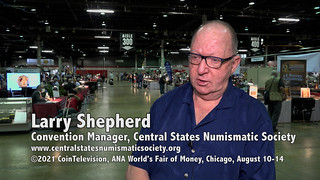 Larry Shepherd, Convention Manager, Central States Numismatic Society,
Larry Shepherd, Convention Manager, Central States Numismatic Society,
David Lisot, Interviewer, CoinTelevision.com.
Larry Shepherd is the new convention manager for the Central States Numismatic Society annual coin convention. The convention has not been held since 2019 due to the COVID Pandemic. The next show is scheduled for April 2022. Larry talks about what collectors and dealers may expect from the upcoming convention.
An excerpt of the video is available for viewing on the Coin Television YouTube Channel at:
https://youtu.be/Nh9khmA-asA
OCTOBER 2021 NNP SYMPOSIUM VIDEOS POSTED
Newman Numismatic Portal Project Coordinator Len Augsburger provided this update on the recent NNP Symposium. Thanks. -Editor
NNP Symposium Video Posted
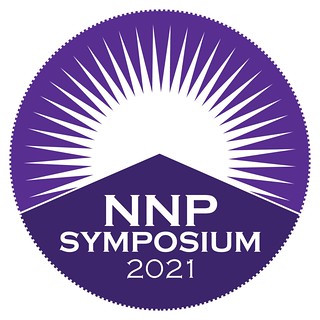 Videos from the recently concluded NNP Symposium (October 15-17) are now posted on Newman Portal. Produced by Lianna Spurrier of Numismatic Marketing, this online event featured a total of 27 speakers presenting on a wide variety of numismatic topics.
Videos from the recently concluded NNP Symposium (October 15-17) are now posted on Newman Portal. Produced by Lianna Spurrier of Numismatic Marketing, this online event featured a total of 27 speakers presenting on a wide variety of numismatic topics.
Among the most viewed presentations were Ellen Feingold and Jennifer Gloede speaking on the National Numismatic Collection. This session included the premier of a 20-minute video, produced by Newman Portal, on the United States coins in the National Numismatic Collection. Note, the videos for David Lange and Bob Van Ryzin are still in post-production and will be released shortly. Many thanks to all our presenters, and we are looking forward to our next event in spring 2022.
Link to NNP Symposium videos, October 15-17:
https://nnp.wustl.edu/library/multimediadetail/539070?Year=2021&take=50
Here are the event descriptions - follow the above link to get to the videos. -Editor
Act of Independence: Robert Morris and the Nova Constellatio Patterns
The Nova Constellatio patterns can be considered the first true US coins ever struck. Join David McCarthy, a prominent researcher into the series, for an exploration of the historical background for the Nova Constellatio patterns. Presented at the Newman Numismatic Portal Symposium, a virtual event conducted October 15-17, 2021. Speaker: David McCarthy.
The Numismatics of British and American Slavery Abolition
Join Ernie Nagy for a review of British and US medals and tokens used in the effort to abolish the slave trade, and slavery itself. This presentation will explore the connections between historical events and numismatic objects produced as the events unfolded. It will also highlight the connections between the British tokens and medals and those produced in the US. Presented at the Newman Numismatic Portal Symposium, a virtual event conducted October 15-17, 2021. Speaker: Ernie Nagy.
When It Gets Serious: Proven Collecting Habits
This discussion will be targeted for serious collectors who are spending $1,000 per month or more on numismatic purchases. At that level, the financial stakes become substantial on a longer-term basis. Collectors must develop a host of evaluation skills to ensure that their collections are composed of premium coins that have the highest probability of appreciation. Collecting research takes time but is well worth the effort to avoid collecting mistakes. Plenty of time will be allowed for Q&A. Presented at the Newman Numismatic Portal Symposium, a virtual event conducted October 15-17, 2021. Speaker: Gerry Fortin.
Grading, Pricing, Demand, and the CAC Effect
This presentation will discuss evaluating the condition of coins, the inconsistent grading of coins by third-party grading services, and determining the market value of coins. It will then introduce CAC - Certified Acceptance Corporation - and its dramatic effect on the marketplace when it comes to both demand and pricing. Examples illustrate fascinating behavior seen in today's coin market. Presented at the Newman Numismatic Portal Symposium, a virtual event conducted October 15-17, 2021. Speaker: John Frost.
Why Five Great Numismatic Books Have Stood The Test of Time: Evidence vs. Speculation
Some of the most important works in American numismatics have been in active use for a century or more. Their dependence upon solid historical methodology, including the use of primary source evidence, has made them useful even as interpretations change and new evidence is discovered. We'll discuss historical methodology in a broad sense using these works as our focus. Presented at the Newman Numismatic Portal Symposium, a virtual event conducted October 15-17, 2021. Speaker: John Kraljevich.
C.C. Wright: The Wright & Bale Years
This presentation will examine some of the tokens issued in the years leading up to the Wright & Bale partnership with some new attributions to this firm. Presented at the Newman Numismatic Portal Symposium, a virtual event conducted October 15-17, 2021. Speaker: Neil Musante.
Abe Lincoln and... the US Treasury Girls + the Legal Tender Act + the 3 New Mints out West + "Hiring Hugh"
Learn about some of the lesser known numismatically related happenings of Abe Lincoln's tenure, such as his views on hiring women in the US Treasury (under Francis Spinner) when the Legal Tender Act of 1862 okayed "Greenbacks." Rush will also discuss his approval of the mints at Denver, Carson City, and little-known mint at The Dalles, Oregon during the War. He also hired Hugh McCulloch to implement the National Bank Act of 1863. Together, these tales paint a new picture of the 1860s and this ubiquitous president. Presented at the Newman Numismatic Portal Symposium, a virtual event conducted October 15-17, 2021. Speaker: Rebecca Rush.
Where Did all the Southern Dough Go? Coins, Currency and the Last Furious Days of the Confederacy
As the Confederate treasure train took flight - from Danville, VA to Washington, GA - Mexican Silver, $50 dollar gold pieces, bank loot, British Sovereigns, and thousands of copper coins were parsed out, purloined and bushwhacked. A trail of tales - including General Joe Johnston salutations on the last CSA payroll to Jeff Davis "flight medals" - were all part of the numismatic lore and legacy. Presented at the Newman Numismatic Portal Symposium, a virtual event conducted October 15-17, 2021. Speaker: Rick Lank.
United States Coins in the National Numismatic Collection
Join us for the debut of a 20 minute video highlighting some of the phenomenal US coins in the Smithsonian coin collection, followed by a Q&A with Curator Ellen Feingold and Collections Manager Jennifer Gloede. This is your chance to go behind the scenes at the Smithsonian like never before. This presentation is not one to miss! Presented at the Newman Numismatic Portal Symposium, a virtual event conducted October 15-17, 2021. Speakers: Ellen Feingold, Jennifer Gloede.
Howard Gibbs, Prince of Primitive Money Collecting
Howard Gibbs was the greatest primitive money collector of his time. He assembled a collection of over 200,000 items including coins and primitive pieces from Africa, the Far East, the Pacific Islands, and North and South America. This collection was dispersed by Hans Schulman in a series of auction and fixed-price sales from the 1950s through the 1970s. Presented at the Newman Numismatic Portal Symposium, a virtual event conducted October 15-17, 2021. Speaker: Wayne Homren.
Secrets of the Rare Coin Business
"Secrets of the Rare Coin Business" is the title of Garofalo's new book, and this presentation will be geared towards novice and experienced collectors and novice dealers. Having spent 42 years as a Professional Numismatist, Garofalo can teach you a few things that will help you enjoy your hobby more, understand what to pay for coins and how to get along well with dealers. It will be a fun and informative presentation. Presented at the Newman Numismatic Portal Symposium, a virtual event conducted October 15-17, 2021. Speaker: Michael Garofalo.
Highlights from the Top 200 Nominees for the 100 Greatest Works of US Numismatic Literature, Revisited
Building up your collection of U.S. numismatic literature? Here's your chance to fill in gaps from many of the top 200 nominees of the 100 greatest works of numismatic literature as voted by readers of The Asylum in 2009, compliments of Richard Stockley Books. Presented at the Newman Numismatic Portal Symposium, a virtual event conducted October 15-17, 2021. Speaker: Howard Engel.
Introduction to World Paper Money Collecting
A brief introduction on world paper money and building a collection. Topics will include how to build a collection, what to collect, and the state of the world paper money market. Presented at the Newman Numismatic Portal Symposium, a virtual event conducted October 15-17, 2021. Speaker: Dennis Hengeveld.
The End of the American Frontier and its Influence on U. S. Coinage Design Since the Early Twentieth Century
This presentation blends US History and numismatics, reflecting the major societal and cultural changes that the US was experiencing at the turn of the Twentieth Century and how those changes influenced coin and currency designs. Presented at the Newman Numismatic Portal Symposium, a virtual event conducted October 15-17, 2021. Speaker: Bob Bair.
The Wonderful World of John Law Medals
John Law medals are some of the most sophisticated medals ever produced. Initially intended as a good joke, they have complex linguistic, religious, mythological, and historical messages intended to provide hours of entertainment to the purchaser. These medals tell the rise and fall of John Law, the Scot who brought France to the brink of bankruptcy. Presented at the Newman Numismatic Portal Symposium, a virtual event conducted October 15-17, 2021. Speaker: Christopher McDowell.
The Coin Show Podcast
Matt Dinger and Mike Nottelmann have been bringing bring their unique perspectives on numismatics to the web for over 10 years with The Coin Show. The show covers a variety of topics in the world of numismatics with much-loved segments on the news and the best things that walked into their respective shops. This episode will feature guest host Lianna Spurrier, a previous guest of the podcast, filling in for Matt Dinger. Presented at the Newman Numismatic Portal Symposium, a virtual event conducted October 15-17, 2021. Speakers: Mike Nottelman, Lianna Spurrier.
Six Kingdoms, One King: The Coinage of Alfonso the Magnanimous and the Crown of Aragon
Starting from a small landlocked kingdom in Northeastern Spain, the crown of Aragon kept expanding until Alfonso the Magnanimous (1416-1458) was king of six separate Kingdoms, each with its own distinct coinage. This presentation surveys the expansion of the crown of Aragon and the evolution its coinage ending with a survey of the coinage of each of Alfonso's realms. Presented at the Newman Numismatic Portal Symposium, a virtual event conducted October 15-17, 2021. Speaker: Deven Kane.
Coin World+ App
Coin World has developed an app for the coin collector that works alongside their NFC chip. You can manage your inventory, track your portfolio, search for coins for sale, create a want list and get all the data Coin World has to offer on U.S. coins. Join Jake Utz to learn how to use the app and the different features it offers. Presented at the Newman Numismatic Portal Symposium, a virtual event conducted October 15-17, 2021. Speaker: Jake Utz.
Best of the Worst: My Favorite Rejected Coin Designs
Rejection is an everyday part of an artist's life. This presentation is chance to show images never seen in public before and to poke fun a bit. Viewers will get a chance to experience the back and forth process of developing a design, see some wins and some fails and think about what they might have chosen in the same situation. Presented at the Newman Numismatic Portal Symposium, a virtual event conducted October 15-17, 2021. Speaker: Heidi Wastweet.
NBS Bibliotalk: Building a Top-100 Numismatic Library
Join us for the next episode of NBS Bibliotalk: A Coin Book Lover's Podcast, live! You'll hear from Leonard Augsburger and Joel Orosz about the top 100 numismatic books. This is the first live episode of NBS Bibliotalk, and you'll have plenty of opportunity to ask questions. Presented at the Newman Numismatic Portal Symposium, a virtual event conducted October 15-17, 2021. Speakers: Len Augsburger, Joel Orosz.
The Next Generation Situation: Their Organization, Communication, and Persuasion
Much has been said in the debate about how to recruit new, non-collectors into numismatics. But what about new collectors who have already started? This talk will dive deep into how the next generation of collectors (who are already collecting) is approaching the hobby: their interests, approaches, mindsets, and more. By examining their involvement with numismatics, we can not only help grow their passion but also become better collectors ourselves. Presented at the Newman Numismatic Portal Symposium, a virtual event conducted October 15-17, 2021. Speaker: Kellen Hoard.
How to Run a Coin Shop 101 This presentation will be about the basics on how to run a successful coin shop including tips, tricks, and heads up intel. Presented at the Newman Numismatic Portal Symposium, a virtual event conducted October 15-17, 2021. Speaker: Alexandrea Zieman.
THE BOOK BAZARRE
BRITISH MUSEUM HOLDS BOGGS OLD BAILEY NOTE
Editing The E-Sylum puts me in a position to be able to connect numismatists from around the world. Recently I helped Tom Hockenhull of the British Museum get in touch with Craig Whitford, who is working with the estate of our friend Money Artist J.S.G. Boggs. Tom had been researching whether or not a Boggs work was indeed in the museum's collection. This fact had been referenced in many published works, but neither Craig nor I had been able to confirm it with the BM. Boggs had been arrested and put on trial in London for counterfeiting because his artwork resembled current banknotes. He was ultimately exonerated.
Craig sent me this piece of good news. Thanks! -Editor
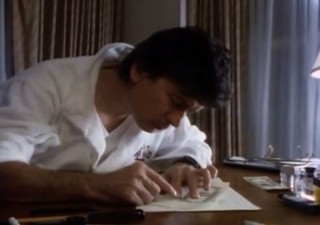 For over 30 years (!) the British Museum has had in their possession one of Boggs' 5 pound notes that was an exhibit in the trial at Old Bailey.
For over 30 years (!) the British Museum has had in their possession one of Boggs' 5 pound notes that was an exhibit in the trial at Old Bailey.
For some reason Boggs never completed the donation paperwork or it was mislaid so very long ago. I assisted Tom with informing the estate of its existence and the importance of it remaining at the British Museum. The estate signed the donation paperwork making it a permanent part of their collection.
Tom will be placing it on permanent exhibit as well as writing an article for the British Museum Magazine in the near future. He also let me know that in about six weeks it'll be added to their online inventory. By searching British Museum Boggs
you'll be able to find it.
Part of the evidence showing Boggs donated this note is the Weschler/Boggs book signing YouTube video starting at the 36:00 minute mark.
This is such an awesome find and now confirms that they've had a piece all this time. I'm sure that Tom's forthcoming article will trace Boggs' and the notes' history and its rediscovery.
To watch the complete video, see:
The Man Who Draws His Own Money: The Value of Currencies Around the World (1999)
(https://www.youtube.com/watch?v=oRD6r6cYcCA)
MORE ON THE 1919 IRISH LIMERICK SOVIET NOTES
Author Jonathan Callaway submitted these corrections on the 1919 Irish Limerick Soviet notes. Thank you! -Editor
The piece on the three Limerick Soviet notes was very interesting. The ultimate fate of these notes was not however as described by Stacks-Bowers. The notes were not confiscated and destroyed by the British Military
nor were they treated as contraband
.
The summary as set out in the text of my forthcoming second edition of Paper Money of Ireland
is as follows, with the key point highlighted:
"It is unclear how many notes were issued in the end, but from the serial numbers on survivors it looks like there were at most some 400 per denomination, making the face value total no more than £320, an insignificant sum in a city of 38,000 people. Many more may have been printed but just eight unnumbered ones are known to have survived, suggesting either that most of the unused stock was destroyed or reports of ‘thousands' being printed were erroneous. Most but not all issued notes were redeemed, leaving the fund backing the notes with a small surplus. To date a total of 43 survivors have been logged, with at least 12 of these in museums. The total is split into 10 notes for 1s, 13 for 5s and 20 for 10s."
These totals include the notes now being offered. These are without doubt rare and interesting notes and no doubt we will learn in due course what value the market now ascribes to a set of three.
To read the complete article, see:
1919 IRISH LIMERICK SOVIET NOTES
(https://www.coinbooks.org/v24/esylum_v24n43a30.html)
MORE ON 1992 BARCELONA OLYMPICS MEDALS
Eric Holcomb writes:
"The Olympia Barcelona 1992 copper medal shown in the current E-Sylum (from a Swiss auction) may be the so-called Catalan
version of the official participation medal (see attached photos of the official medal). The break on the obverse and reverse of the Catalan version presumably represents the desire of some residents of Catalonia to separate from Spain.
"The official medals are the same large size (70 mm, weight about 254 grams) and were presented in a maroon pouch (not a box) made of imitation leather. XC is the initials of the designer, Xavier Corbero."
Thanks! For assistance I reached out to Robert Hoge who kindly provided this transcription and translation of the inscription. -Editor
The obverse reads AGRAÏM LA TEVA/ COL.LABORACIÓ/ COOB '92. COOB would be the abbreviated version, I guess, of Comitè de Organisació Olímpica de Barcelona (1992). In Spanish/Castilian, formally and officially, the COOB would apparently be rendered as COMITÉ ORGANIZADOR DE LOS JUEGOS DE LA XXV OLIMPIADA BARCELONA 1992. Barcelona was awarded the games in 1986, right after Spain entered the EU, and the Committee must have begun its activities shortly thereafter.
For the reverse, the inscription can be read and interpreted equally in Spanish (that is to say "Castilian", as Catalans prefer; they've informed me that as a language, the adjective "Spanish" does not exist) and Catalan, XXV/ OLIMPIADA/ BARCELONA 1992. Formally or technically, OLIMPIADA should be rendered as OLIMPÍADA, with the acute accent above the second I (as "Í"), but presumably they did not consider this to be crucial.
"We appreciate your/ cooperation/ Barcelona Olympic Organizing Committee" (COOB is the abbreviation for the Barcelona Olympic Organizing Committee) on the obverse and "25th/ Olympiad/ Barcelona 1992" on the reverse. The tiny "M" mark with a crown over it is the mark of the Madrid mint, the Casa de la Moneda (officially, in full, the Fábrica Nacional de Moneda y Timbre); the small "XC" mark is that of the artist's initials -- for Xavier Corberó, as already stated by Eric Holcomb.
This medal is apparently the official commemorative issue that was presented to volunteers who assisted in the preparation and coordination of the events. In all, there were 16 different commemorative medals for the games. They evidently share a very similar reverse design, that of the actual statement of the occasion, the name of the games. I am not sure which one is represented by Mr. Holcomb, but the commemorative/participation medals varied greatly in their obverse themes, it seems -- mostly images relating to the city of Barcelona, which undertook major transformations of itself through the entire project of hosting the games and has since become the principal tourist destination in all of Europe, I have read.
The central logo above the traditional five Olympic rings is supposed to represent a stylized human being as a dynamic figure in an athletic stance, designed by the Catalan artist Josep Maria Trias.
This medal from the auction was specifically distributed in appreciation to volunteers. As you are probably already well aware, the Olympic games always have several different official medals. The best known are the victors' award medals, the Gold, silver and bronze versions presented for first, second and third place standings in each of the athletic competition events. Then there are always commemorative and/or participation medals, which are much more variable.
Thank you! -Editor
Robert adds:
"It is interesting to think that the "break" shown on the AGRAÏM (Catalan) side of the medal can be interpreted as an independentista sentiment. I doubt that Sr. Samaranch (who insisted upon being addressed as "Your excellency") was a supporter of the separatist movement, but who knows?!"
Eric adds:
"I should have looked at the book first! Olympic Medals and Coins, 510 B.C. – 1994, by Victor Gadoury (published 1994), lists both versions of the medal along with the winners' medal. My version is described as the Official Medal of the Participants, Spanish version
(mintage 40,000) whereas the other one is the Official Medal of the Participants, Catalan version
(mintage 55,000). Although Gadoury doesn't say so, it's likely that the Catalan version was primarily awarded to volunteers rather than athletes and officials."
For more information, see:
Barcelona 1992 Olympic Official Commemorative Medals
(https://en.wikipedia.org/wiki/Barcelona_1992_Olympic_Official_Commemorative_Medals)
To read the earlier E-Sylum article, see:
OLYMPIC MEDALS IN MUENZENONLINE AUCTION 16 : Lot 33: Barcelona 1992
(https://www.coinbooks.org/v24/esylum_v24n43a25.html)
NOTES FROM E-SYLUM READERS: OCTOBER 31, 2021
Tatham Stamp & Coin Company Envelopes
"I've been reading with interest the recent explorations of Dealer Coin Envelopes.
I have a bit to add to the coverage that has been offered up to this point.
"Some years ago, as I recall it was at the ANA National Money Show in Portland, I observed the display of a collection of coins that had ben acquired from the Tatham Stamp & Coin Company back in the early post-WWII years . . . complete with the envelopes the coins had been marketed in . . . that had been mounted by Gawain O'Connor. Chatting with Gawain as I was admiring the presentation, I offered that I would be interested in acquiring the collection if he ever determined to let go of it.
"A couple years later Gawain contacted me to inquire if my offer was still good . . . which I affirmed . . . so the collection became mine. I have subsequently exhibited it, non-competitively, on perhaps as many as a half-dozen occasions . . . Central States, Michigan State and PAN seem to come readily to mind . . . over a period of a couple years . . . several years ago.. Guess I should drag the exhibit out and share it some more one of these days.
"My interest in acquiring the collection stemmed from the fact that my very first numismatic acquisition was a selection of approval offerings from Tatham, back in 1950, so the envelopes were readily recognizable . . . but I hadn't saved any of them at the time . . . thus the motivation for a nostalgic acquisition."
Great story. This is the fun of collecting! -Editor
To read the earlier E-Sylum articles, see:
WAYNE'S NUMISMATIC DIARY: AUGUST 16, 2015
(https://www.coinbooks.org/esylum_v18n33a15.html)
MORE ON DEALER COIN ENVELOPES
(https://www.coinbooks.org/v24/esylum_v24n43a09.html)
Another Porcelain Coin Collector
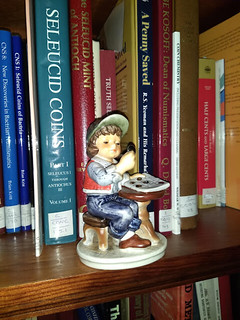 Last week Susan Sims wrote:
Last week Susan Sims wrote:
"I saw the little blurb about the Goebel Coin Collector figurine. I went on eBay and snapped one up. I had no idea they even made this. One more item for the coin room."
Susan adds:
"Here she is hanging out with the Seleucids. "
She seems quite content! Happy collecting! -Editor
To read the earlier E-Sylum article, see:
NOTES FROM E-SYLUM READERS: OCTOBER 24, 2021 : More Porcelain Coin Collectors
(https://www.coinbooks.org/v24/esylum_v24n43a10.html)
Query: Maryland Dealer William Bromley
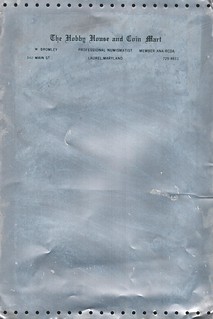 "I purchased a flexible, aluminum printing plate on eBay which was likely used for letterhead or some similar identifying document. William Bromley was a coin dealer active during the 1960s in Laurel, Maryland. His membership in the RCDA (Retail Coin Dealers Association) places it in that time period, as this organization was fairly short-lived. I believe it was created as an alternative to the Professional Numismatists Guild, which in those days was a very exclusive club. I recall reading that Sol Kaplan worked very hard to keep it that way, offending a lot of excluded dealers in the process. Eventually, the PNG loosened up a bit, and there was no longer a need for the RCDA.
"I purchased a flexible, aluminum printing plate on eBay which was likely used for letterhead or some similar identifying document. William Bromley was a coin dealer active during the 1960s in Laurel, Maryland. His membership in the RCDA (Retail Coin Dealers Association) places it in that time period, as this organization was fairly short-lived. I believe it was created as an alternative to the Professional Numismatists Guild, which in those days was a very exclusive club. I recall reading that Sol Kaplan worked very hard to keep it that way, offending a lot of excluded dealers in the process. Eventually, the PNG loosened up a bit, and there was no longer a need for the RCDA.
I couldn't find much about Bromley at the Newman Numismatic Portal or The Numismatist archives, but I did learn that his membership application to the ANA was published in the April 1963 issue of The Numismatist. He was member 49284. I'd be interested in knowing whether readers can add anything to his story."
Julian Leidman writes:
"I knew Bill, as I was just starting out as a dealer. He would occasionally attend coin shows and had the shop in downtown Laurel. He played cards with some of the local dealers from time to time. He kind of faded away in the late 1960's."
I also checked with Dave Schenkman, and Dave checked with Gene Brandenburg, but neither remembered dealings with Bromley. Dave didn't move to the area until 1971. Can anyone add more? -Editor
Col. E.H.R. Green Estate
Dave Lange writes:
"I was going through my late father's effects when I found a group of photos that date to his Army basic training in Miami Beach during August-September of 1943. One of them has printed on its back "Col. E.H.R. Green Estate, Star Island, Miami Beach, Florida." It's a stock photo sold to tourists and not one he took himself, but it's fun to think that he made an unwitting numismatic connection while there."
Thanks - interesting connection. -Editor
To read the earlier E-Sylum article, see:
HARVEY STACK ON MEETING COL. E.H.R. GREEN
(https://www.coinbooks.org/esylum_v16n06a17.html)
MORE ON DEALER COIN ENVELOPES
(https://www.coinbooks.org/v24/esylum_v24n43a09.html)
HORNBY ISLAND COIN ART
Jim Bulmer of Hornby Island in British Columbia, Canada, passed along these photos of his coin art. Thanks. -Editor
I bought $1500 in U.S. change from an Island Friend, and this year (Covid-Hobbies) I glued them all to plywood and painted them, and this is how they turned out.
Cents through dollar coins, and some large Tokens and Pins, Gorilla Glue, and Tremclad paint on plywood. They sit near the road in the trees, they're pretty heavy.
Here's a closeup. Lots of work! -Editor
To read an earlier E-Sylum article, see:
2020 HORNBY ISLAND TRADE TOKENS
(https://www.coinbooks.org/v23/esylum_v23n22a30.html)
U.S. ASSAY OFFICE AT NEW YORK GOLD INGOT
Paul Horner writes:
"A gold ingot from the NY assay office that weighs 402 ounces! For Sale through Stack Bowers!"
Wow! I'll order two and use them for bookends... Here's some information from the SBG email. -Editor
1935 United States Assay Office at New York Gold Ingot. Round Dated Hallmark. No. 29666. Lot A2220. 402.796 ounces (total weight), .9969 fine. Additional Hallmark of Mocatta & Goldsmid Ltd., London. 175 mm x 85 mm x 41 mm, rectangular. 401.547 ounces AGW. An exciting and historic offering from Stack's Bowers Galleries. This is the largest gold ingot from the New York Assay Office ever offered by an auction firm in the United States and one of the largest Assay Office ingots available for private ownership. With 12,528.30 grams of .9969 fine gold, this ingot dwarfs all other offerings that we are aware of, the largest of which is 28.7 ounces. In recognition of its incredible size, outstanding eye appeal and historical significance, Stack's Bowers Galleries has named this imposing piece the Big Apple Ingot.
The front-facing side of this ingot features most of the stamps, including the round dated hallmark of the United States Assay Office at New York at the viewer's left. Interestingly, the word ASSAY is double punched. Above the hallmark is the fineness expressed as FINE / 996.9, while in the top center is the lot number A2220. Below the lot number is a second hallmark - MOCATTA & GOLDSMID / LTD. / LONDON / BULLION BROKERS. The ingot number, 29666, is on the left edge of the bar. All stamps are firmly and evenly impressed, the design elements crisp and fully legible.
All faces exhibit a beautiful color in a medium golden-yellow. Casting imperfections are few and far between, the most visible of which are the cracks formed at the bottom of the bar as the metal cooled. These are quite beautiful and beg to be viewed up close while running a finger over the textured surface; they enhance the character and uniqueness of this ingot. Handling marks are light with minor corner wear and light scrapes associated with stacking and moving this bar over the past eight decades.
Gold ingots such as this were made by the United States Assay Office for use in international trade, as confirmed by the second hallmark from the London, England firm of Mocatta & Goldsmid on the present example. As with their silver ingots, the Assay Office at New York achieved a particularly high level of quality in production, from casting to stamping. Such quality is readily evident and best appreciated in this large and imposing example. Its offering by Stack's Bowers Galleries represents a rare and exciting opportunity for the specialist, be they a serious investor in gold bullion or an advanced collector of United States Assay Office ingots.
VOCABULARY TERM: FREE-STANDING MEDAL
Here's another entry from Dick Johnson's Encyclopedia of Coin and Medal Terminology. -Editor
Free-Standing A medallic item which has a base broad enough to support the item standing on edge. Both medals and medallic objects have been issued with such an integral function. Robert Weinman's 1987 Society of Medalists issue number 115, his Cat and Mouse, will stand upright, as an example of such a medal. A medallic object, one of many, is Roy Lichtenstein's 1969 Salute to Airmail.
Here are images of the medals. I haven't found a freestanding Lichtenstein medal - they all seem to have been issued with a base. -Editor
This medal was chosen as the 115th issue of the prestigious Society of Medalists series in 1987.
The obverse bears slice of Swiss cheese with mouse emerging from hole at lower right; cat peeking around corner at left.
The concordant reverse shows the other side of the Swiss cheese with body of cat, tail curled at feet. Behind right forepaw, signed RAW
The medal measures 69mm x 55mm and was produced by the Medallic Art Company. The reported mintage is 750 pieces in bronze.
To read the complete article, see:
Cat and Mouse 1987
(http://medallicartcollector.org/som-115.shtml)
Roy Lichtenstein
American, 1923–1997
Salute to Airmail, 1968
Bronze with gold plate
4.5 x 2.56 in. (11.43 x 6.5 cm.)
Inscribed; and numbered, '40/50' on side
To read the complete article, see:
Roy Lichtenstein
American, 1923–1997
Salute to Airmail, 1968
(https://www.artnet.com/auctions/artists/roy-lichtenstein/salute-to-airmail-3)
To read the complete (short!) entry on the Newman Numismatic Portal, see:
Free-Standing
(https://nnp.wustl.edu/library/dictionarydetail/515961)
WILLIAM AND ROBERT IDLER
American Numismatic Biographies author Pete Smith submitted this article on dealer William Idler and his son Robert. Thanks! -Editor
William Idler (1808-1901)
William Idler was born in North Carolina on June 25, 1808, the son of Jacob Idler (1773-1856) and Sophia (1781- 1869). He married Rosanna Kelley (1821-1897). Their children were Jacob (1840-1900), Mary Idler Brown, Rose (1847-1937), William Idler, Jr. (1849-1916) and Robert (1851-1921). In the 1850 Census, the family was in Mount Ulla, North Carolina.
On June 9, 1869, his daughter Rose Amelia Idler, married John W. Haseltine at Clinton Street Presbyterian Church.
He spent fifteen years in South America searching for minerals. In 1858 he opened his store at 111 South Eleventh Street with his house next door at 109 South Eleventh. This was about three blocks east of the Second Philadelphia Mint. In the 1860 Census, his profession was shown as stationer. His trade was originally in mineral specimens and books on geology. This evolved into a jewelry store with coins as a secondary interest.
Idler was active in the coin trade in Philadelphia when a lot of interesting items were coming out of the Mint. These included restrikes of the dollars of 1801-1802-1803. He probably handled four of the Class III 1804 dollar restrikes and kept one for his collection. He handled six of ten known proof 1884 Trade Dollars and all five known proof 1885 Trade Dollars.
Idler acquired two pattern coins for the $50 gold coins proposed in 1877. These were passed down through John W. Haseltine and sold through Stephen K. Nagy to William Woodin. At the time, the price of $10,000 each was reported as the most valuable U. S. coins ever sold. Mint official negotiated the return of these patterns to the Mint in exchange for trunks of other Mint patterns.
In the 1900 Census Idler was living alone with his profession listed as Store Keeper. He died at home on July 16, 1901, and is buried at Woodlands Cemetery in Philadelphia. According to his tombstone, his death occurred on a Tuesday at 9:00 P.M.
William Idler represents the start of a chain of notable dealers that extends nearly to the present day. He provided coins for his son-in-law, John W. Haseltine. Haseltine gave a start to the young Chapman brothers. Idler coins were passed through Haseltine to his partner Stephen K. Nagy. The Nagy estate passed to his nephew Earl Moore. Much of the disposition of the estate was handled by Moore's wife, dealer Catherine Bullowa-Moore. The chain ends with her death at age 97 in 2017.
Robert Kelley Idler (1851-1921)
I was not aware of Robert Idler prior to October 28, 2021, as I was researching his father. Constructing his biography has been quite a challenge and I thank Julia Casey for her assistance in trying to solve the puzzles.
He was born in North Carolina. No date of birth has been found.
In the 1870 and 1880 Census, he was listed as a clerk in the Post Office. In the 1893-96 era, he owned a liquor store at 12 South Delaware. A 1901 newspaper article shows him as a real estate appraiser. In 1910 and 1920, he was listed as a coin dealer.
On May 23, 1871, he married Ida Stearly. In early 1880, he was living with his parents. Later in 1880 he had a brief marriage to Emily Gross who died of Typhoid Fever in November of 1880 at age 19. On September 3, 1882, he married Maggie Norris. Around 1890, Margaret Idler shows up in city directories as the widow of Robert K. Idler.
Then for several years, city directories show Robert K. Idler at one address and Margaret, widow of Robert K. at another. This is the kind of anomaly that can cause great distress to a biographer.
Robert moved around. In 1901 he lived at 1504 Sansom Street. In 1903 his residence was at 265 South 11th Street. In 1904 he moved to 241 South 15th Street in Philadelphia. He ran simple ads in The Numismatist for April 1906 through November 1906. In 1910 he was at 4227 Brown Street. In 1916 he lived at 3012 Gordon. In 1920 he lived on Delaware River Road in Salem, New Jersey.
The 1920 Census has Robert K. Idler, age 69, living on Delaware River Road, Salem, New Jersey, and employed as a coin dealer. The 1920 Census also has Robert Idler, age 55, living at 3012 Gordon Street, Philadelphia and employed as Dealer / Old Coins. Apparently, he was counted twice.
He died on December 21, 1921, at Jumbo, New Jersey. He is buried with the family at Woodlands Cemetery in Philadelphia.
Idler ran an ad in the back (page 94) of United States Mint at Philadelphia by James Rankin Young, His 265 South
11th address appears on the first 1903 printing. The 241 South 15th address appears on a later 1904 printing.
Following page 87 is a new page Coins Bearing a Premium.
Subsequent pages are reprinted without page
numbers.
Idler was soliciting auction consignments five years after Haseltine ran his last sale. It appears that Idler was trying to benefit from the reputation of his father as well as the reputation of his current partner. Without his father's name, he would be a minor player not worthy of mention.
GREENBACKS AND THE WILLARD HOTEL
The Willard hotel in Washington D.C. has a connection to Greenbacks. Here's the story from the Washington Post. -Editor
For more than 150 years, the Willard hotel, across the street from the White House, has been the site of political wheeling and dealing, international delegations and more than its fair share of intrigue and violence.
Here's a history of the hotel author Nathaniel Hawthorne said more justly could be called the center of Washington than either the Capitol or the White House or the State Department.
The hotel itself has an only-in-Washington origin story, involving a precedent-setting Supreme Court case. Though a humble hotel comprising six connected rowhouses began there as early as 1817, it didn't take the name Willard's City Hotel until 1847, when Henry Willard took over the lease. Soon, he replaced the rowhouses with a four-story building, making it the perfect hangout for politicos. In 1854, he agreed to buy the land, though he didn't actually make the purchase for another 10 years, toward the end of the Civil War, when U.S. bank notes were wildly depreciated. The resulting contract dispute went all the way to the Supreme Court; ultimately, the court ruled that Willard had to pay in gold, but he walked away with his hotel.
In 1901, the Willard was torn down and rebuilt as the 12-story Beaux-Arts building that now stands.
To read the complete article, see:
The hotel where Trump allies plotted to overturn the election has a wild and sometimes violent history
(https://www.washingtonpost.com/history/2021/10/26/willard-hotel-dc-history-trump/)
MORE ON THE MORTON & EDEN SWEET TIN COINS
Morton & Eden kindly provided this preview draft of the catalogue descriptions for additional interesting "sweet tin" finds to be auctioned on November 26. Thank you. -Editor
U.S.A., Colonial North America, New England, shilling, 1652, large planchet Pine Tree issue, obv., reversed N in IN, without pellets at trunk, rev., reversed N in ENGLAND, 70.60gr. (Noe 9; Salmon 7a-Diii), slightly buckled and scratched in field beside pine tree, otherwise good extremely fine and the variety rare, in NGC holder graded UNC DETAILS OBV SCRATCHED £3,000-4,000
U.S.A., Post-Colonial Period, Continental Currency, pewter ‘dollar', 1776, EG FECIT type, the design attributed by some authorities to the New Jersey engraver Elisha Gallaudet; obv., sundial at centre with legend MIND YOUR BUSINESS below, FUGIO, sun and signature EG FECIT on inner circle around, rev., interlinked circles bearing the names of thirteen States, legend AMERICAN CONGRESS / WE ARE ONE at centre (Newman 3-D), light surface scuffs on obverse and a couple of tone spots on reverse, almost as struck, with much original lustre, in NGC holder graded MS63 £30,000-40,000
The exact status of these intriguing pieces remains a matter for discussion and further research. This example and the following lot, which are in very similar condition, are previously unrecorded specimens which have been recently discovered in the possession of the Wentworth family, including John Wentworth Jr. (1745-87), who served as a delegate for New Hampshire to the Continental Congress and who was a signatory to the Articles of Confederation. When new the coins may well have been acquired by, or presented to, him or another prominent family member.
U.S.A., Post-Colonial Period, Continental Currency, pewter ‘dollar', 1776, EG FECIT type, another similar; the design attributed by some authorities to the New Jersey engraver Elisha Gallaudet; obv., sundial at centre with legend MIND YOUR BUSINESS below, FUGIO, sun and signature EG FECIT on inner circle around, rev., interlinked circles bearing the names of thirteen States, legend AMERICAN CONGRESS / WE ARE ONE at centre (Newman 3-D), from the same pair of dies and with very similar diagnostic die flaws to those seen on the preceding lot, also almost as struck and essentially free of surface marks, with much original lustre, in NGC holder graded MS62 £30,000-40,000
France / U.S.A., Post-Colonial Period, Libertas Americana, copper medal, 1781, by Augustin Dupré, the iconic commemorative piece conceived by Benjamin Franklin, bearing Dupré's portrait of Liberty which was to inspire the creation of the first Federal coins (Betts 615), the surface displaying light surface marks overall and with an old verdigris spot on reverse rim, generally extremely fine; in large-sized NGC holder graded MS62 BN £6,000- 8,000Also a recently-discovered piece, the medal could have belonged to several members of the Wentworth family, including John Wentworth Jr. (1745-87).
For more information, see:
https://www.mortonandeden.com/
To read the earlier E-Sylum articles, see:
MORTON & EDEN OFFER SWEET TIN FIND
(https://www.coinbooks.org/v24/esylum_v24n39a25.html)
FINEST KNOWN 1652 NEW ENGLAND SHILLING
(https://www.coinbooks.org/v24/esylum_v24n43a26.html)
SEDWICK NOVEMBER 2021 AUCTION 30 SELECTIONS
Here's a selection of items that caught my eye in the upcoming Sedwick sale. -Editor
Lima, Peru, cob 8 escudos, 1710 H, four-digit date, HISPANIAR variety, ex-1715 Fleet, NGC UNC details / obverse scratched, Tauler Plate. S-L25a; KM-38.2; Cal-2117. 26.58 grams. This coin is so well centered on a broad, round flan that in 1992 Frank Sedwick called it "exquisite...its excellence of cut and strike and completeness...as close as we have ever seen to a Philip V Lima 8E Royal." Indeed it is striking to see so much full detail, including all the legend, even the second date in four digits, 1710, without any doubling or weakness or even wear, as this coin clearly did not circulate before it was lost to the sea, which imparted an orangish sheen of sediment on the surfaces, in addition to a tiny patch of white coral in the waves, the only manufacturing demerit being a hairline crack at about 1 o'clock / 4 o'clock. As noted, however, the act of salvage or later handling imparted several areas of light scratches, particularly below the denomination on the pillars side and around the upper-left castle on the cross side.
To read the complete lot description, see:
Lima, Peru, cob 8 escudos, 1710 H, four-digit date, HISPANIAR variety, ex-1715 Fleet, NGC UNC detail
(https://auction.sedwickcoins.com/Lima-Peru-cob-8-escudos-1710-H-four-digit-date-HISPANIAR-variety-ex-1715-Fleet-NGC-UNC-detail_i43216975)
Gold bar #17, 878 grams, 15.75 karat, Class 2, marked with tax stamps, karat markings and assayer or foundry cartouche IVAN / P3, ex-Atocha (1622). 8-1/2" x 1-1/4" x 1/2". Large Atocha gold bars are highly sought, especially with lots of markings, and this one is about as complete as you can get, with just one small piece cut from one end in its time (very typical, probably to settle an account or pay a tax). The top surface, which is typically uneven and bears a small, raised knob in the center to which some thick, brown encrustation still clings, shows no fewer than seven partial circular tax stamps, four bold fineness markings consisting of a boxed XV and three dots in a separate box, plus one full cartouche with weak but certain IVAN / P3 that could possibly stand for an assayer named "Juan Perez" (as some paleography studies have shown that what looks like P3 or P with a backwards Z can be shorthand for the name "Perez"), one of the scarcer cartouches seen on such bars. Light yellow color all over with nicely contrasting red color in the markings. Also we note the early style of Treasure Salvors marking (circular) on the bottom (and an early artifact number). A nearly 1-kg bar with a reasonable starting price due to its uncommon sub-16K fineness. From the Atocha (1622), with original Fisher photo-certificate 85A-GB017.
To read the complete lot description, see:
Gold bar #17, 878 grams, 15.75 karat, Class 2, marked with tax stamps, karat markings and assayer or
(https://auction.sedwickcoins.com/Gold-bar-17-878-grams-15-75-karat-Class-2-marked-with-tax-stamps-karat-markings-and-assayer-or_i43217015)
Brazil (Minas Gerais), 960 reis counterstamp (1809, Joao Prince Regent) on a Potosi, Bolivia, bust 8 reales, Charles IV, 1799 PP, NGC XF 45, c/s UNC strong. Russo-450; KM-242. Broad flan (typical for this host), off-center obverse, very lightly toned, the full counterstamp desirably away from the rims to enable a fully visible host date. NGC #5961757-004.
To read the complete lot description, see:
Brazil (Minas Gerais), 960 reis counterstamp (1809, Joao Prince Regent) on a Potosi, Bolivia, bust 8
(https://auction.sedwickcoins.com/Brazil-Minas-Gerais-960-reis-counterstamp-1809-Joao-Prince-Regent-on-a-Potosi-Bolivia-bust-8_i43217801)
Costa Rica, stainless steel 5 centimos, 1967 BCCR, NGC Mint Error MS 65, double struck with second strike off center. KM-184.1a. Frosty luster with faint light blue toning, the bold second strike very much off-center and protruding from the edge, strong die-polish lines on reverse. NGC #4735710-009. Pedigreed to the Tamarindo Collection of Costa Rican Error Coins and Paper Money.
To read the complete lot description, see:
Costa Rica, stainless steel 5 centimos, 1967 BCCR, NGC Mint Error MS 65, double struck with second s
(https://auction.sedwickcoins.com/Costa-Rica-stainless-steel-5-centimos-1967-BCCR-NGC-Mint-Error-MS-65-double-struck-with-second-s_i43217917)
Guatemala, gold bust 2 escudos, Ferdinand VII, 1808 M, very rare, NGC MS 61, finest and only example in NGC census, ex-Stuart. Cal-1590; KM-70. Lustrous and choice, with all elements of strike perfectly detailed and the fields satin smooth save for a couple trivial marks, first year of a very rare type encompassing just three non-consecutive dates (1808, 1811 and 1817), undergraded in our opinion but without rival in any case, assuredly finest known and with a celebrated pedigree to boot. NGC #4427731-006. Pedigreed to the Richard Stuart collection (stated on special label).
To read the complete lot description, see:
Guatemala, gold bust 2 escudos, Ferdinand VII, 1808 M, very rare, NGC MS 61, finest and only example
(https://auction.sedwickcoins.com/Guatemala-gold-bust-2-escudos-Ferdinand-VII-1808-M-very-rare-NGC-MS-61-finest-and-only-example_i43218080)
Japan (Osaka mint), proof 20 sen, Emperor Mutsuhito, Meiji year 13 (1880), extremely rare, NGC PF 62. KM-Y24; JNDA-unl. Flawless strike with faint rainbow toning splashed across the lustrous surfaces, the reverse like a sunset and the dragon on the obverse particularly well defined by the toning, with just a few faint wisps on the mirrored fields but no marks or any evidence of mishandling, a highly important, very low-mintage gem. Drawing comparisons to the famous King of Siam US proof set from the early 1800s, the fourteen-piece Japanese Meiji-13 proof set was similarly used for diplomatic purposes (presumably for presentation to heads of state) and remains surprisingly elusive, as up to 77 sets were reportedly made but no intact sets are known today.
The closest to a complete set, eleven pieces, was in the John Pittman collection (David Akers auction of August 1999, lot 5152, acquired from the Farouk sale in 1954), including a box that might have been original, and a second set of eleven (but not all the same denominations as Pittman) was sold at Heritage in January 2017, both setting worldwide records and generating lots of excitement in the world of Japanese numismatics. Each denomination in the set is now a major rarity, the present denomination from a recorded mintage of only 96 pieces (presumably all proofs given as gifts and never meant for circulation) and thought to be unique by Pittman. His example, lacquered and hairlined, is now known to be one of three ever offered for public sale, with the addition of the Heritage example in PF 63, the present one being technically the same grade but with more eye-appeal in our opinion, a historical and numismatic gem for the most advanced collectors in the world. NGC #6268661-001.
To read the complete lot description, see:
Japan (Osaka mint), proof 20 sen, Emperor Mutsuhito, Meiji year 13 (1880), extremely rare, NGC PF 62
(https://auction.sedwickcoins.com/Japan-Osaka-mint-proof-20-sen-Emperor-Mutsuhito-Meiji-year-13-1880-extremely-rare-NGC-PF-62_i43218122)
Great Britain, copper alloy Admiral Vernon medal, Vernon and Brown / Satan and Walpole (ca. 1739), ex-Adams, ex-Craige. AC-NLv8G. 35 mm, 9.65 grams. Choice AU+ with hint of luster and original brassy color on fields, very sharp details. AC: "Clearly more a political piece than a historical medal, contrasting the noble heroes on one side with the evil-doing Walpole on the other." The NO EXCISE statement in the exergue on reverse refers to an import tax proposed by Walpole in 1733 that was defeated but then brought up again in 1739, when these Vernon medals were made. Walpole is generally considered the first de facto Prime Minister of Great Britain. XRF: 50.94% copper, 47.37% zinc, 1.30% lead. Pedigreed to the John Adams Collection (with his handwritten tag) and to the Ted Craige Collection.
This sale includes Part I of the John Adams Collection of Admiral Vernon Medals. -Editor
To read the complete lot description, see:
Great Britain, copper alloy Admiral Vernon medal, Vernon and Brown / Satan and Walpole (ca. 1739), e
(https://auction.sedwickcoins.com/Great-Britain-copper-alloy-Admiral-Vernon-medal-Vernon-and-Brown-Satan-and-Walpole-ca-1739-e_i43218294)
To read the earlier E-Sylum article, see:
SEDWICK TREASURE AUCTION 30 ANNOUNCED
(https://www.coinbooks.org/v24/esylum_v24n41a19.html)
SELECTIONS FROM HERITAGE TALLENT COLLECTION
Here are some lots that caught my eye in the upcoming Heritage sale of the The Michael S. Tallent Collection Part III. -Editor
Port Richmond, NY- Staten Island Bank $1,000 18__ G16 Proof PMG About Uncirculated 55.
An excessively rare Proof on a rare bank in either Proof or issued form and we are not allowing the Proprietary Proofs of this design that were printed by the ABNCo in the 1980s to be a part of this discussion. PMG has graded only one example, and this is it. It is without any POCs and has a regal appearance with its oversized dimensions. Appropriately, a harbor scene is the vignette on this example that exhibits toning. It has a Durand & Compy. New York imprint and is an excellent example of their finest work. This may even be the plate note on page 1749 of the Haxby reference. Simply, a great note and destined for another great collection once all the bids have been executed.
To read the complete lot description, see:
Port Richmond, NY- Staten Island Bank $1,000 18__ G16 Proof PMG About Uncirculated 55.. ...
(https://currency.ha.com/itm/obsoletes-by-state/new-york/port-richmond-ny-staten-island-bank-1-000-18-g16-proof-pmg-about-uncirculated-55/a/62207-95102.s)
Raleigh, NC- State / Treasury of North Carolina 40¢ Jan. 14, 1816 Cr. 06 PMG Choice Very Fine 35 EPQ.
An excessively rare early note, this 40¢ example was part of an emission of $82,000, with half of the issue going to the Bank of Cape Fear and half to the Bank of Newbern. The sole purpose of the issue was to purchase bank stock for the state's account. John Haywood, signer of this note, served as Treasurer for forty years, from 1787 until his death in 1827. Haywood practiced a rather primitive form of accounting, and experts are divided over whether the nearly $69,000 in missing funds was merely bad bookkeeping or embezzlement. In any case, Haywood's estate was essentially wiped out making reimbursements to the state. This note is vastly superior to the plate note in Shull's southern states catalog and to the Eric P. Newman Collection note. It is probably the best condition example, by far, of the estimated 2-4 surviving notes.
An odd denomination War of 1812 era note. -Editor
To read the complete lot description, see:
Raleigh, NC- State / Treasury of North Carolina 40¢ Jan. 14, 1816 Cr. 06 PMG Choice Very Fine 35 EPQ.. ....
(https://currency.ha.com/itm/obsoletes-by-state/north-carolina/raleigh-nc-state-treasury-of-north-carolina-40-jan-14-1816-cr-06-pmg-choice-very-fine-35-epq/a/62207-95127.s)
A. Hirsch, Sutler to 47th Regiment O(hio) V(olunteer) I(nfantry) 50¢ Oct. 9, 1862 Keller OH-SF050 Remainder PMG Choice Uncirculated 63.
The 47th Regiment was gathered near Cincinnati on August 13, 1861 and participated in an exhaustive list of battles. It was mustered out on August 11, 1865 at Little Rock, AR. This remainder note, while datelined Cincinnati, was more likely used in the field. This note features a vignette of Liberty standing at left by a federal shield and another of Crawford's Freedom at right, with a third showing drum and military uniform parts below. PMG comments minor ink.
A nice Sutler note remainder. -Editor
To read the complete lot description, see:
A. Hirsch, Sutler to 47th Regiment O(hio) V(olunteer) I(nfantry) 50¢ Oct. 9, 1862 Keller OH-SF050 Remainder PMG Ch...
(https://currency.ha.com/itm/obsoletes-by-state/ohio/a-hirsch-sutler-to-47th-regiment-o-hio-v-olunteer-i-nfantry-50-oct-9-1862-keller-oh-sf050-remainder-pmg-choice-uncircula/a/62207-95155.s)
Richmond, VA- Commonwealth of Virginia $50 Aug. 13, 1861 Cr. 2 PMG Choice Uncirculated 64.
Authorized by the Act of April 30, 1861, this note was part of a series that was perhaps the most attractive ever produced by Hoyer & Ludwig. Reflecting the belief that the war might be a short one, the note was payable 12 months after date and paid 6% interest. Of the 12,300 $50 notes originally issued, only 268 were outstanding in late 1863. Most of these were eventually lost to the elements and belief that they were worthless after the war. Shull suggests that somewhere between 16 and 50 may still exist. With only faint evidence of previous mounting noted by PMG, this is undoubtedly one of the nicest condition notes available; we have not offered a finer example in any of our public auctions.
A great selection of Virginia notes in this sale. -Editor
To read the complete lot description, see:
Richmond, VA- Commonwealth of Virginia $50 Aug. 13, 1861 Cr. 2 PMG Choice Uncirculated 64.. ...
(https://currency.ha.com/itm/obsoletes-by-state/virginia/richmond-va-commonwealth-of-virginia-50-aug-13-1861-cr-2-pmg-choice-uncirculated-64/a/62207-95526.s)
Richmond, VA- Commonwealth of Virginia $100 Aug. 13, 1861 Cr. 1 PMG Choice Uncirculated 64.
An absolutely stunning premium condition example, this is an exceedingly rare early Virginia issue. Printed by Confederate printer Hoyer & Ludwig, this note features vibrant red underprints and snow white paper. In your cataloger's opinion, notes from this series are perhaps the best notes produced by the Richmond firm. Only 6,150 of this note which paid 6% interest were issued, and by late 1863 only 83 notes were outstanding. Since then, certainly most of these have been lost to the ravages of time with Shull estimating a surviving population of only 5-15 notes known. This note will raise any collection to which it is added to the next level (or two). We have offered only one other example, the Newman note, which graded About New 53 PPQ and crossed the auction block for just over $7,600 in 2015. The example in this lot is ex-Ford and was bought by our consignor in 2005.
To read the complete lot description, see:
Richmond, VA- Commonwealth of Virginia $100 Aug. 13, 1861 Cr. 1 PMG Choice Uncirculated 64.. ...
(https://currency.ha.com/itm/obsoletes-by-state/virginia/richmond-va-commonwealth-of-virginia-100-aug-13-1861-cr-1-pmg-choice-uncirculated-64/a/62207-95527.s)
Salem, VA- County of Roanoke 90¢ Dec. 1, 1862 J-L CR07-65 PMG Choice About Unc 58 EPQ. An odd denomination note from this county issuer, this piece is one of the few that we have offered that has earned the EPQ grade modifier.
Nice odd denomination Civil War scrip note. -Editor
To read the complete lot description, see:
Salem, VA- County of Roanoke 90¢ Dec. 1, 1862 J-L CR07-65 PMG Choice About Unc 58 EPQ.. ...
(https://currency.ha.com/itm/obsoletes-by-state/virginia/salem-va-county-of-roanoke-90-dec-1-1862-j-l-cr07-65-pmg-choice-about-unc-58-epq/a/62207-95550.s)
NUMISMATIC NUGGETS: OCTOBER 31, 2021
Here's a selection of interesting or unusual items I came across in the marketplace this week. Tell us what you think of some of these. -Editor
Heraclius, 610-641.
Ô-Solidus, 610/613, Constantinopolis, 5. Offizin; 4.45 g. Gepanzerte Büste v. v. mit Helm und Kreuz//Kreuz auf drei Stufen.
DOC 3 b; Sear 73
From the Keunker eLive Auction 68. -Editor
To read the complete lot description, see:
Heraclius, 610-641. Ô-Solidus, 610/613, Constantinopolis, 5. Offizin; ...
(https://www.kuenker.de/en/elive-auction/stueck/310504)
Muhammad Shah, 1719-1748.
Ô-Mohur, 1. Regierungsjahr (= 1719/1720), Surat; 10.74 g.
K./M. 438.1; Fb. 829.
Another nice lot from the Keunker eLive Auction 68. -Editor
To read the complete lot description, see:
Muhammad Shah, 1719-1748. Ô-Mohur, 1. Regierungsjahr (= 1719/17 ...
(https://www.kuenker.de/en/elive-auction/stueck/310851)
German Fallschirmjager 'KRETA' gold class table medal. Measures 2 1/4 inches in diameter. Die struck brass construction.
I'm sure others exist, but I don't recall seeing a paratrooper medal before. Interesting. -Editor
To read the complete lot description, see:
Lot 100: WWII German Kreta Gold Paratrooper Medal
(https://www.invaluable.com/auction-lot/WWII-German-Kreta-Gold-Paratrooper-Medal-100-c-3C24A3AA31)
Presentation set of three rectangular table medals memorializing the victims of the Ravensbruck, Sachsenhausen, and Buchenwald concentration camps, each approx. 1.5 x 3.75 in. Placed into a felt lined case with two snap closures. Fine condition. Unresearched, sold as is.
I'm unfamiliar with these. Does anyone have more information about them? "NATIONALE MAHN UND GEDENKSTATTE" translates to "NATIONAL MONUMENT AND MEMORIAL". An internet search found a German Wikipedia page about national memorials in Buchenwald, Ravensbrück and Sachsenhausen. -Editor
To read the complete lot description, see:
Lot 191: MEMORIAL MEDALS FOR CONCENTRATION CAMP VICTIMS
(https://www.invaluable.com/auction-lot/MEMORIAL-MEDALS-FOR-CONCENTRATION-CAMP-VICTIMS-191-c-A8548E29CD)
WAYNE'S NUMISMATIC DIARY: OCTOBER 31, 2021
Wednesday, October 27, 2021
On Wednesday morning I set off on an excursion to Pittsburgh. My prime purpose was to speak at the Pennsylvania Association of Numismatists (PAN) show on Friday, but I added a couple days to allow for visiting friends, relatives and doing a little sightseeing.
The Banks of Pittsburgh
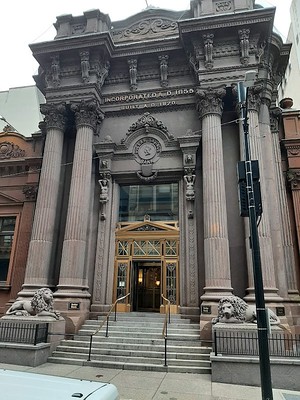 Regarding the sightseeing I made a couple phone calls to confirm my destinations would be available. I was happy to score 2 for 2. I'd been curious about the fate of the classic lobby of the old Union Bank building downtown, where I'd once kept a safe deposit box for my collection. The lobby had high ceilings, an abundance of marble, and of particular numismatic interest, about a dozen 1906 Morgan dollars. Not real ones of course - they don't exist - but large plaster ceiling medallions. The branch was constructed in 1906.
Regarding the sightseeing I made a couple phone calls to confirm my destinations would be available. I was happy to score 2 for 2. I'd been curious about the fate of the classic lobby of the old Union Bank building downtown, where I'd once kept a safe deposit box for my collection. The lobby had high ceilings, an abundance of marble, and of particular numismatic interest, about a dozen 1906 Morgan dollars. Not real ones of course - they don't exist - but large plaster ceiling medallions. The branch was constructed in 1906.
I'd had to move my collection out when the building was sold to a developer. In the years since I'd moved from Pittsburgh, the building was turned into condominiums. I called the sales office and was happy to learn the lobby had been preserved, albeit now occupied by a high-end men's clothing store, Joe Orlando's. After arriving in town and parking my car, I walked to the store and entered through the same revolving glass doors I'd used so often years ago. And the Morgan medallions were still there.
Just up the street in the same block was my second destination - the Dollar Bank building. Founded in 1855 as a bank for ordinary working people, this downtown branch was erected in 1870 and still stands today as a nearly perfectly preserved example of the era's banking architecture. A few years ago the bank restored the stately brownstone lion scuptures, moved them inside and replaced them with exact duplicates. They also created a Heritage Center with museum exhibits of bank documents, photographs, and old-fashioned banking equipment. It's still a working branch and open to the public during normal business hours. Check it out if you're in town. I hope to work with the ANA to plan a tour during the 2023 Pittsburgh World's Fair of Money.
University of Pittsburgh
After lunch I met Garrett Ziss between classes in the Oakland section of the city, where he's a freshman at my alma mater, the University of Pittsburgh. He showed me an impressive bronze gate in the Cathedral of Learning that had been donated by famous local numismatist George Clapp. We had a nice walk around the campus discussing old buildings and new. The place looked very nice.
Thursday, October 28, 2021
Bob Evans
On Thursday afternoon I walked from my hotel over to the PAN Show. The first numismatist I ran into was none other than Bob Evans who had an interesting observation on his entry into numismatics - "I started at the top". While most of us began by pulling coins out of circulation, as the Chief Scientist for the S.S. Central America recovery effort, he began by helping find and pull up from the bottom of the ocean a masssive haul of gold bars, gold dust and coins that had last seen the light of day in 1857 before the ship was lost in a hurricane. I'd enjoyed hearing him speak at the ANA World's Fair of Money in Chicago in August, where he displayed and rang the Central America's ship bell. He was sporting a spiffy money-themed mask.
Be Just and Fear Not
Right up front was the table of E-Sylum sponsors Dave and Melissa Kahn of David Kahn Rare Coins. We talked about the coin business, country auctions, selling on eBay and some neat items in their cases, like this engraved half dollar with the slogan "Be Just and Fear Not."
Tom Uram and the PAN Banquet Programs
Talisman and Coiner
Becky Rush "Talisman" and Rick Lank "The Coiner" of Hagerstown Maryland had a nice table near the lecture area. We had great conversations about their books and numismatics in general. They've got some great ideas about promoting numismatics to the general public and have already succeeded in reaching some of that audience with their books.
Bob Evans and I were in the front row for Rick's presentation.
To read earlier E-Sylum articles, see:
NEW BOOK: MONEY, MAYHEM AND MIGHT
(https://www.coinbooks.org/v22/esylum_v22n34a06.html)
NEW BOOK: THE CONFEDERATE TREASURE TRAIN
(https://www.coinbooks.org/v23/esylum_v23n46a04.html)
NEW BOOK: MINTING PRINTING & COUNTERFEITING
(https://www.coinbooks.org/v24/esylum_v24n21a03.html)
NEW BOOK: SUMPTUOUS SOUTHERN STORIES
(https://www.coinbooks.org/v24/esylum_v24n41a03.html)
Lincoln and Franklin
Channeling Abe Lincoln and Ben Franklin, Dennis Boggs and Patrick McBride performed Two Wars, Two Centuries
. It was excellent, closing with an impressive recitation of the complete Gettysburg Address.
Friday, October 29, 2021
Bill Bierly and Howard Gibbs
The next day I came back in time for Bill Bierly's talk on Creation of the National Motto on Coinage
Right afterwards I gave my own talk on "Howard Gibbs: Prince of Primitive Money" following a short update on the addition of Coin World and Numismatic News to the Newman Numismatic Portal. By the way, David Lisot was on hand recording presentations for NNP, so those unable to attend in person will have the opportunity to see what they missed.
Don Everhart
Retired U.S. Mint Sculptor-Engraver Don Everhart had a table where PAN Chairman of the Board Don Carlucci displayed Everhart's work on the Rachel Carson medal for the ill-fated 2020 Pittsburgh ANA World's Fair of Money.
Short But Sweet
I couldn't stay much longer after giving my talk - time to get on the road back home. I didn't see half the people I would have liked to talk to, but did get to chat at least briefly with
Corleen Chesonis,
Rich Crosby,
Don Carlucci,
Mike Drabick,
Don Everhart,
Dick Gaetano,
Ed Krivoniak,
Larry Korchnak,
Simcha Kuritzky,
Carl Waltz,
Garrett Ziss and others.
Garrett Ziss writes:
"It was my first PAN show and I had a great time. I had a chance to talk with several attendees who I expected to see, as well as quite a few others who were pleasant surprises since they traveled quite a distance to attend the show. I was also able to pick up an 1828 C-3 half cent and an 1838 N-4 large cent (which fits in with our Clapp theme!)."
Great show! Already looking forward to seeing more numismatic friends at next month's Whitman Baltimore Expo (I'll be there for a while Friday afternoon).
MEDIEVAL COIN FIND IN UPPER AUSTRIA
A hoard of some 6,000 medieval coins has been discovered in Upper Austria. -Editor
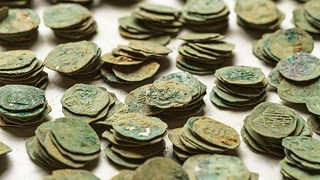 More than 6,000 silver coins from the late Middle Ages were discovered during a renovation project on a farm in the village of Rainbach, Upper Austria.
More than 6,000 silver coins from the late Middle Ages were discovered during a renovation project on a farm in the village of Rainbach, Upper Austria.
The silver coins, which were handed over to the OÖ Lande-Kultur GmbH museum in Upper Austria, also known as Linz Schlossmuseum, were wrapped in fabric and kept in a clay lidded pot,
the museum said.
The statement said that the exact time of the concealment is not yet known. What is certain, however, is that it is from the second half of the 15th century and consists of different types of coins that were then in circulation in the country as a means of payment.
The museum gave details about the different coins they found.
On the one hand, these were pfennigs and their half-pieces, called ‘halves;' on the other hand, larger coins worth several pfennigs, mainly ‘Prague groschen' imported from Bohemia and some Milanese pegioni, popularly called ‘snake groschen' after the coat of arms, and Tiroler Kreuzer, a type of coin of particularly high quality, the museum said.
It is unclear whether the coins that were recently discovered will go on display at the museum.
To read the complete article, see:
Priceless cache of 6,000 ancient coins found under farm
(https://komonews.com/news/offbeat/priceless-cache-of-6000-ancient-coins-found-under-farm)
1982 NEW ORLEANS COIN HOARD DISCOVERY
In his Stack's Bowers blog, Dave Bowers writes about the 1982 discovery of a coin hoard in the New Orleans French Quarter. -Editor
On October 29, 1982, a few minutes past noon, pandemonium prevailed in the French Quarter in downtown New Orleans as earthmoving equipment brought to light a vast treasure of silver coins. The site, scheduled to be used for a new Meridien Hotel, may have secreted a long-forgotten bank reserve.
Passersby grabbed what they could in a frantic free-for-all. In the melee no accounting was ever made of what was found. However, it is estimated that over 1,000 (perhaps well over) silver pieces were found including large numbers of Spanish-American silver coins. Apparently, these had been buried in three cedar boxes. A report of the scramble by James H. Cohen noted: "Visualize, if you will, businessmen in Brooks Brothers suits, women executives dressed in high heels and stockings, and laborers in their work clothes all on their hands and knees in mud, at times up to their waists, digging with their bare hands for buried treasure."
Among large denomination United States silver coins, various half dollars from about 1811 to 1837 were registered as was a solitary 1798 dollar. However, most attention by numismatists was centered on a remarkable cache of Liberty Seated quarter dollars struck at the nearby New Orleans Mint in 1840 and 1841, many of which were Mint State! A few of the 25-cent pieces were of the 1840-O No Drapery variety, but most were 1841-O With Drapery. The exact quantity of 1840-O and 1841-O quarters found has been a matter of conjecture ever since. Larry Briggs, in The Comprehensive Encyclopedia of United States Seated Quarters, notes that of one die variety of 1841-O alone, more than 200 coins are known from this hoard.
The latest-dated coin in the New Orleans hoard was an 1842 quarter dollar, which dealer James H. Cohen graded as "About Uncirculated, which indicates that the hoard was buried shortly thereafter."
Additional information on this fascinating find is revealed in the following personal interview notes by James D. Ash, taken with New Orleans coin dealers and collectors and an investment broker who was on the scene: "The coins were found in three cypress [sic] boxes. The first was broken open, and the coins were mingled with mud and dirt and many passersby entered the excavation area to gather these coins… The second box was picked up at the scene by two individuals and loaded into a pickup truck. They left the scene quickly without opening the box at the time. So far as is known, the contents of this box never came on the local coin market. The third box was more systematically distributed at the scene, and numerous specimens from it were traded and sold to the local market… The coins were 80% foreign and 20% United States. Most of the foreign pieces were Spanish-American silver 2-real and 8-real pieces. The United States coins were all quarters plus a few higher denominations."
The typical coin was blackened from 150 years of immersion in damp soil. Many were cleaned soon thereafter, judiciously and otherwise, by numismatists. Today survivors from this hoard can be identified by having a somewhat matte-like surface (not lustrous mint frost), usually with some traces of gray or black in areas.
To read the complete article, see:
The Silver Coin Excitement in New Orleans
(https://www.stacksbowers.com/News/Pages/Blogs.aspx?ArticleID=silver-coins-new-orleans-mint)
I found one contemporary account on Newspapers.com; I'm sure there are plenty more around. "It was like Mardi Gras grabbing for doubloons." "Television cameras quickly arrived." -Editor
To read the complete article, see:
1982 New Orleans coin hoard find
(https://www.newspapers.com/clip/88066090/1982-new-orleans-coin-hoard-find/)
BIDEN GIVES POPE FRANCIS A CHALLENGE COIN
This week President Biden gave Pope Francis a challenge coin and a laugh. -Editor
Mr Biden, who is in Rome for the G20 summit, met with Pope Francis for a marathon 90-minute discussion to talk about the Catholic faith and current affairs before handing the Pope a deeply personal gift in honour of Pope Francis' work and to show Mr Biden's own committment to Catholicism.
Mr Biden said: With your permission I would like to give you a coin.
The President held out the shining gold coin which had the US seal on the front of it.
Mr Biden told the Pope how on the back of the coin was the stamp of Delaware, the home state of the US President.
It also bore the seal of the 261st unit his son, Beau Biden, served with during his time in the US military.
The President told Pope Francis the coin was in fact owned by his late son, who tragically died in 2015 from brain cancer, before adding that Beau would want me to give this to you
as the pair shared a special moment.
Biden explained the coins are given to "warriors and leaders" and called Francis "the most significant warrior for peace I've ever met in a touching tribute.
But in a joking moment Mr Biden said: Now the tradition is, and I'm only kidding about this…
If next time I see you, you don't have it, you have to buy the drinks!
The joke sparked laughter in the 84-year old Pope as the two held one another's hands smiling.
While Biden quipped again saying he was the only Irishman you've ever met who has never had a drink
as the pair laughed together.
Pope Francis hit back noting how despite Mr Biden's comments, the President's entourage had brought whiskey
as a gift for the Pope.
While Mr Biden laughed acknowledging that was indeed the case before ending their meeting in Rome.
Are there images of Biden's challenge coin anywhere? Would anyone know who designed it or where it was manufactured? -Editor
To read the complete article, see:
Joe Biden has Pope in stitches with quip in first Rome meeting 'You have to pay!'
(https://www.express.co.uk/news/world/1514024/joe-biden-pope-francis-vatican-coin-joke-g20-summit-rome-usa-religion-catholic-vn)
THE IMPERIAL BANK OF PERSIA
Susan Bremer published an article in the October 27, 2021 Heritage Currency News about the Imperial Bank of Persia and its banknotes. Here's an excerpt. -Editor
The Imperial Bank of Persia, created with the help of two remarkable men, Naser al-Din Shah Qajar and Baron Paul Julius von Reuter, presents a tremendous story for curious numismatic collectors to explore. Before the establishment of the Imperial Bank in 1890, Persia's circulating currency consisted only of gold and silver coins. These two men, the Shah and the Baron, helped create an avenue for the development of paper currency and a banking system monopoly that lasted until 1928.
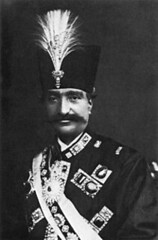 Visionary leader, Naser al-Din Shah Qajar came to power September 5, 1848. Accomplishments during his reign included balancing the country's budget by reforming the tax system, building military factories, opening the first newspaper, and improving relations with world powers to mitigate the British and Russian influence. The Shah became the first ruler of Persia to visit Europe in 1873 and to observe more modern business practices. In an effort for more modernization, Naser al-Din granted unprecedented (and unpopular) concessions to foreigners. This openness to foreign contribution toward the modernization of Persia enabled the creation of the Imperial Bank.
Visionary leader, Naser al-Din Shah Qajar came to power September 5, 1848. Accomplishments during his reign included balancing the country's budget by reforming the tax system, building military factories, opening the first newspaper, and improving relations with world powers to mitigate the British and Russian influence. The Shah became the first ruler of Persia to visit Europe in 1873 and to observe more modern business practices. In an effort for more modernization, Naser al-Din granted unprecedented (and unpopular) concessions to foreigners. This openness to foreign contribution toward the modernization of Persia enabled the creation of the Imperial Bank.
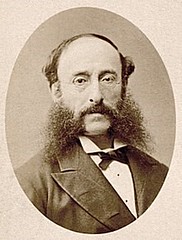 The foreigner in this instance was Baron Paul Julius von Reuter. Born Israel Beer Josaphat, he changed his name in 1844 when converting from Judaism to Christianity and was created a baron by the Duke of Saxe-Coburg-Gotha in 1871. The early years of Baron de Reuter's company were telegraph and news related. He began in Aachen in the Kingdom of Prussia during the 1850s and moved the company to London in 1851. Reuter's telegraph and news services continued to grow, and in 1865, Reuter restructured his company to become Reuter's Telegram Company.
The foreigner in this instance was Baron Paul Julius von Reuter. Born Israel Beer Josaphat, he changed his name in 1844 when converting from Judaism to Christianity and was created a baron by the Duke of Saxe-Coburg-Gotha in 1871. The early years of Baron de Reuter's company were telegraph and news related. He began in Aachen in the Kingdom of Prussia during the 1850s and moved the company to London in 1851. Reuter's telegraph and news services continued to grow, and in 1865, Reuter restructured his company to become Reuter's Telegram Company.
Baron de Reuter initially began negotiations with the Shah to build a railroad. Reuter's first concession agreement was signed in 1872. The concession granted him control over Persian roads, telegraphs, mills, factories, extraction of resources, and other public works. In return, the Persian government received a negotiated amount and 60% of the net revenue for 20 years. The clergy in Persia were outraged by this concession and waged a public relations war, informing the public that Reuter was the devil and would destroy their country. The agreement was alarming to both the Russian and the British governments. So troubling, in fact, that the British government refused to support it. Intense public outcry and Reuter's failure to start building his railroad within fifteen months allowed Naser al-Din the opportunity to cancel the first concession in 1873.
Reuters second concession came some years after of the cancellation of the first agreement. The second concession agreement wasn't until 1889, but gave Reuter exclusive banking and mineral rights for sixty years. From its inception in 1890, the Imperial Bank was the state bank and had the sole power to issue notes. As part of the concession, the Imperial Bank was granted tax-free status for sixty years. The Imperial Bank used Naser al-Din's portrait on many of the notes that were issued.
To read the complete article, see:
The Imperial Bank of Persia
(https://currency.ha.com/heritage-auctions-newsletter/currency-news-the-imperial-bank-of-persia.s)
THE EVOLUTION OF BANGLADESHI BANKNOTES
Here's an article on the history of banknotes in Bangladesh. -Editor
Every time the political regime or the governor of the Bangladesh Bank of this country changed, so did our currency notes. Achia Khanom Likhon, the curator of Taka Museum of the capital said, "Money is one language that everyone, whether s/he is educated or not, understands. So currencies are a great medium of communication and that's why we find certain messages and images on the notes."
During our research for this story, we came across an interview where Kazi Golam Mustafa, the designer of our very first currencies and postal stamps, told the interviewer from BTV that he has created art that people carry in their pockets every day.
It made us think, how have these exchangeable paper notes evolved over time? What is the story behind them?
After the partition of India and Pakistan, the banking system brought two branch offices of the erstwhile State Bank of Pakistan established in July 1948: one was in Bangladesh (former East Pakistan) and the other was in West Pakistan (present Pakistan).
But then the East Pakistan wing used the Pakistani rupee as we didn't have any currencies of our own. Bangla was one of the two official languages of the Pakistan union between 1956 and 1971. So in East Pakistan, the Pakistani rupee was used but it had taka written on it.
The central bank of Bangladesh or the Bangladesh Bank was formed on 16 December 1971 after the liberation war ended. But the banknotes of Pakistan continued to be used in Bangladesh for approximately three months after independence. Eventually, the authorities decided to issue our very own banknotes.
On 4 March 1972, the official notes or taka of Bangladesh were introduced, replacing the Pakistani rupee. And from then on, in the last 50 years, Bangladesh Bank has printed currency notes of over 10 series and in an array of designs.
Currently, Bangladesh has eight currency notes (Tk5, 10, 20, 50, 100, 200, 500 and 1000). Printing of Tk1 and 2 have already stopped; and slowly the use of these notes that are already in use is being replaced with coins and the Tk5 note is also on its way into oblivion.
To read the complete article, see:
The evolution of Bangladeshi currency notes and what it says about our past
(https://www.tbsnews.net/features/panorama/evolution-bangladeshi-currency-notes-and-what-it-says-about-our-past-322393)
CHINESE MILLIONAIRE WITHDRAWS CASH
A disgruntled bank customer in China began withdrawing a fortune in cash. -Editor
A wealthy Chinese man who was asked to follow pandemic protocols inside a bank in Shanghai responded by threatening to withdraw all his savings.
The man, known only by his social media handle Sunwear
on Weibo, flared up after engaging in an argument with employees of the Bank of Shanghai on Hongmei Road, reported Ladbible.
Sunwear noted in his Weibo posts that he first withdrew 5 million Chinese yuan (around $783,000) from his account (the maximum withdrawal per day) and ordered the staff to manually count and check each 100 yuan banknote.
He then told them he would keep returning to withdraw the same amount until he fully emptied his account.
He also shared images of bundles of bills placed on top of the bank counter and later tucked in suitcases.
To read the complete article, see:
Chinese millionaire withdraws fortune, forces bank to hand count bills because they asked him to wear mask
(https://finance.yahoo.com/news/chinese-millionaire-withdraws-fortune-forces-221937102.html)
COUNTERFEIT COUPON CAPER
Paper money isn't the only target of counterfeiters. Here's a tale of coupon counterfeiters from Virginia Beach. -Editor
The FBI is revealing new details about a $31.8 million counterfeit coupon scheme that landed a Virginia Beach couple in prison for nearly 20 years, combined.
In a press release last week, the agency said that investigators found fake coupons in "every crevice" of the house belonging to Lori Ann Talens and her husband, Pacifico Talens, Jr.. The falsified savings were worth more than $1 million. They also found designs for coupons for more than 13,000 products on Lori Ann Talens' computer.
"She trained herself in the different techniques she needed to manipulate barcodes to make these coupons work," said Special Agent Shannon Brill in the FBI release. Talens, who is considered the mastermind of the scheme, would create fake coupons with discounts "near or even over" an item's retail value.
Talens didn't use the fraudulent coupons for herself. The FBI said she sold them to subscribers that found her on social media and communicated with them using an encrypted messaging app. Talens was paid more than $400,000 in digital currencies such as bitcoin and sometimes "exchanged coupons for stolen rolls of the special paper stores use to print out coupons," the agency said.
The three-year scheme was discovered by the Coupon Information Corporation, which received a tip that someone was making and mailing fraudulent coupons. One group of manufacturers said it lost $125,000 from fake coupons linked to Talens.
To read the complete article, see:
Extreme couponers were sent to prison in $31.8 million fraud scheme
(https://www.cnn.com/2021/10/25/business/extreme-couponer-sentencing/index.html)
THE BOOK BAZARRE
NORTH KOREANS USING CASH COUPONS
In North Korea the government has resorted to printing coupons in lieu of banknotes. -Editor
Money coupons manufactured by North Korea's Central Bank are proliferating throughout the country, NK News has independently confirmed, as the DPRK's COVID-19 pandemic controls reportedly cause cash printing problems.
An informed source told NK News that the coupons — which photos show come in a 5,000-won denomination, printed with red ink on white paper — have been pumped out due to a shortage of North Korean won bills, confirming past reports on the presence of these coupons on the streets of Pyongyang. Asia Press reported that the coupons began circulating around the end of August.
Peter Ward, a North Korea economy expert and a contributing analyst to NK Pro, said the existence of the money coupons could also relate to recent capital controls.
??This might look like North Korea has just run out of ink and paper, but at a time when the economy is believed to be in great difficulties and household purchasing power is depressed, the need to print new won in such a form is probably a consequence of the closure of the border and aggressive government moves to curtail the use of forex on domestic markets that have driven up demand for won notes,
he said.
Ward added that the development is another reminder that the DPRK economy is not in good health. If they are not careful they might overshoot in their money printing and start driving up inflation again like the country last witnessed from 2001-13,
he said.
To read the complete article, see:
North Koreans using cash coupons as country struggles to print new bills
(https://www.nknews.org/2021/10/north-koreans-using-cash-coupons-as-country-unable-to-print-new-bills/)
CONVICT COIN STASH FOUND AT PORT ARTHUR
A dig at a prison site in Port Arthur, Australia yeilded a cache of silver coins likely secreted away by an inmate. Found via The Explorator newsletter. To subscribe to Explorator, send a blank email message to: explorator+subscribe@groups.io. -Editor
Prisoners at historic Port Arthur were not allowed to carry money. So how did a pile of silver shillings worth about a week's salary for one of the penal colony's overseers end up buried beneath the convicts' workshop?
"It's such an evocative find, it's so out of place," said Port Arthur Historic Site Management Authority conservation project officer Sylvana Szydzik.
"We know that convicts occasionally had coins, but that was a pretty substantial amount of money at the time."
The coins were found during a 10-month archaeological dig of the foundry and blacksmith site conducted by University of New England post-doctoral research fellow Richard Tuffin and Ms Szydzik.
The find joins other discoveries such as handmade gambling tokens as well as tobacco pipes and skillfully made metal products.
A coin expert, known as a numismatist, will be engaged to analyse the shillings, which date between 1814 and 1844.
Dr Tuffin said it was likely the coins were stolen in the 1850s.
Just like at a modern prison, there was a black market operating within Port Arthur.
"Back then it was tobacco and gaming," Dr Tuffin said.
"We know they made their own currency."
He said possession of the banned items like handcrafted gambling tokens uncovered at a previous dig at the penitentiary would have created a hierarchy among the convicts.
To read the complete article, see:
Coin stash discovered at Port Arthur archaeology dig gives rare insight into illicit lives of convicts
(https://www.abc.net.au/news/2021-10-30/coin-stash-discovered-at-port-arthur-archaeology-dig/100541632)
AMMUNITION ROUND FILLED WITH MONEY
Arthur Shippee passed along this New York Post article about an unusual find of coins and paper money. -Editor
A Michigan family made a bombshell discovery this weekend when they discovered a non-live WWI-era ammunition round was filled with treasure.
The family was cleaning out its house when they came across what they believed to be a live ammunition round and contacted authorities, Michigan State Police said on Twitter.
Cops from the Michigan State Police Bomb Squad conducted an X-ray of the military relic, and ultimately determined that the round was not live.
Instead, it was discovered that the shell contained a hidden trove of antique coins and bills dating from the 1800s and early 1900s.
To read the complete article, see:
WWI-era ammunition round found filled with antique coins, bills
(https://nypost.com/2021/10/25/wwi-era-ammunition-round-found-filled-with-antique-coins-bills/)
LADY GAGA'S $100 BILL BOA
If you're looking for a Made-in-the-USA fashion accessory, check out Ladya Gaga's 100 dollar bill boa. -Editor
Lady Gaga picked a particularly luxe look for her private flight to Las Vegas on Tuesday, sharing an Instagram snap of herself wearing a wild wrap made out of $100 bills.
The 35-year-old House of Gucci
star styled her outré accessory with a polka-dotted Magda Butrym dress ($1,300), Valentino cat-eye sunglasses ($449) and a hot pink Hermès Kelly bag ($22,550).
But it was the boa of Benjamins that quickly proved to be the outfit's talking point.
Gaga can you give me that scarf I'm … cold,
one fan joked in the comments, while another wrote, I need some scarfs [sic] like that in my poor life.
While it's highly likely that the cash wrapped around Gaga's shoulder is faux, the pop superstar's no stranger to wacky style statements, regularly stepping out in perilously high platform heels and memorable, meme-able accessories.
And hey, a boa made of money is clearly more practical (and less pungent) than a dress fashioned from meat.
To read the complete article, see:
Lady Gaga rocks boa made of $100 bills on private flight to Las Vegas
(https://pagesix.com/2021/10/13/lady-gaga-rocks-boa-made-of-100-bills-on-plane-to-las-vegas/)

